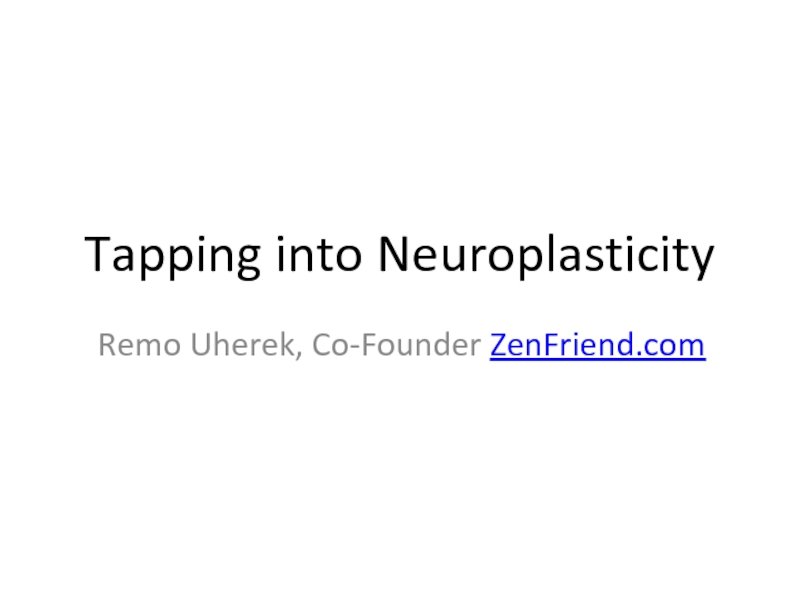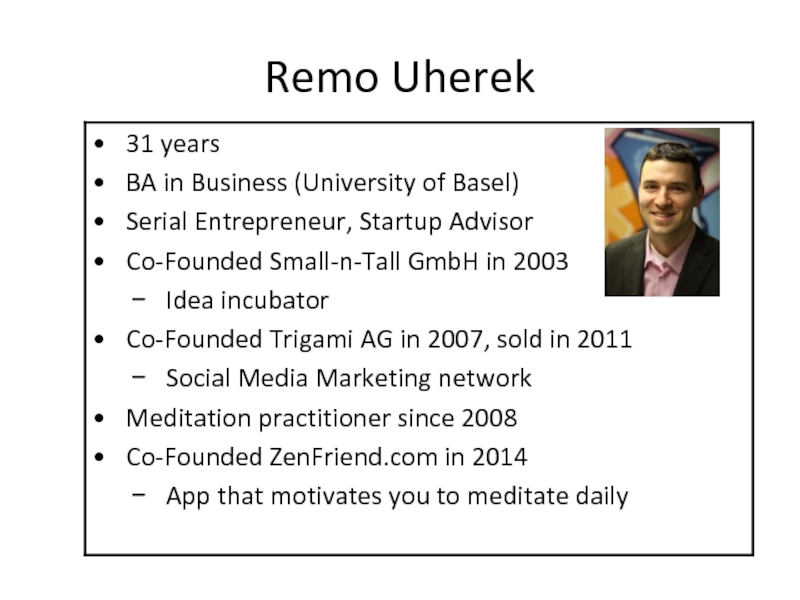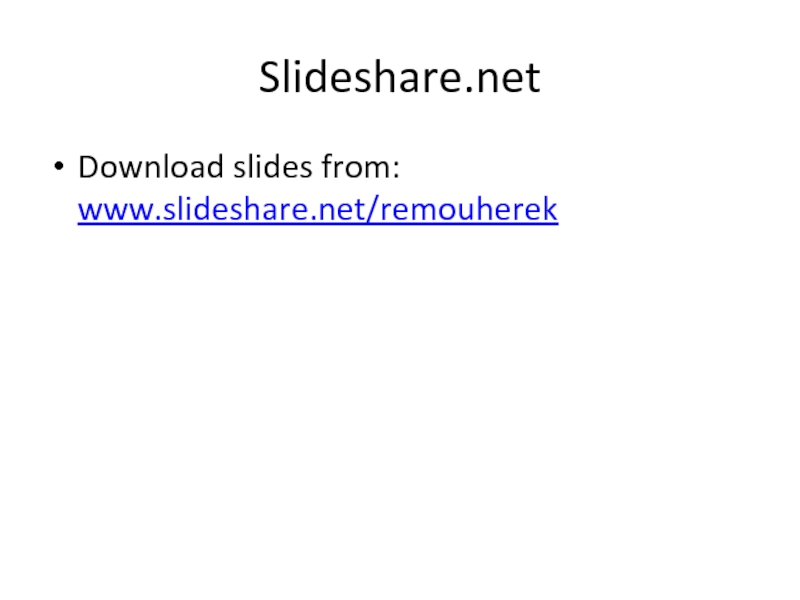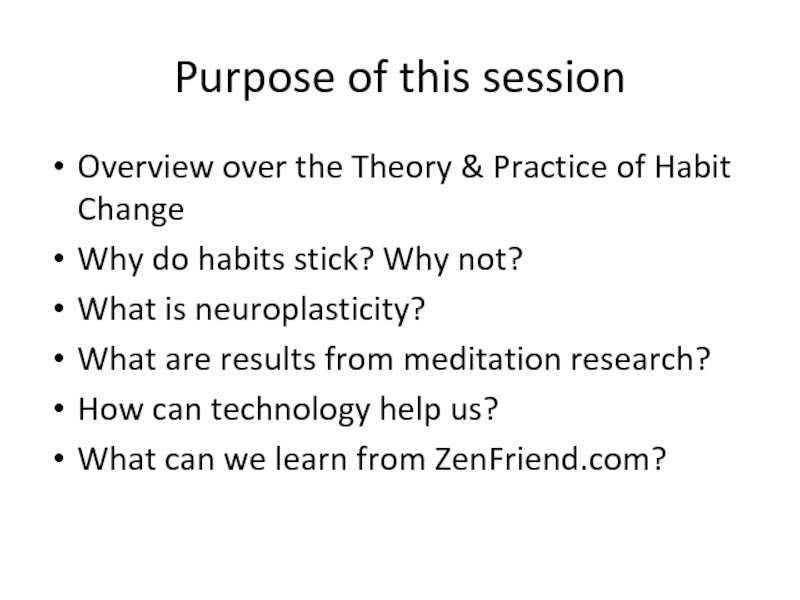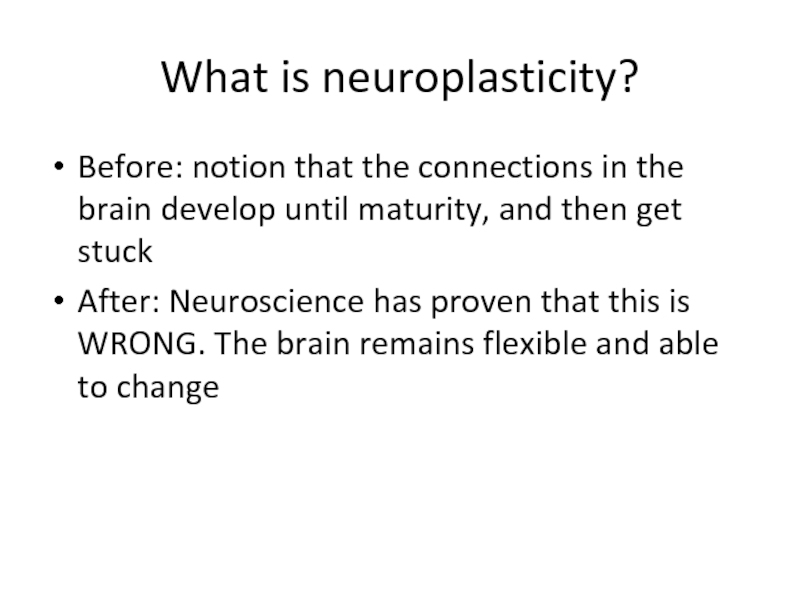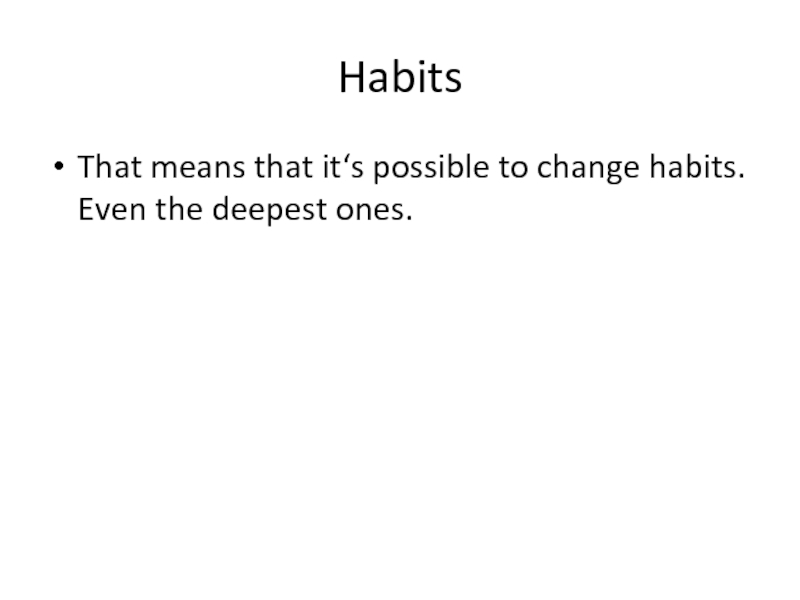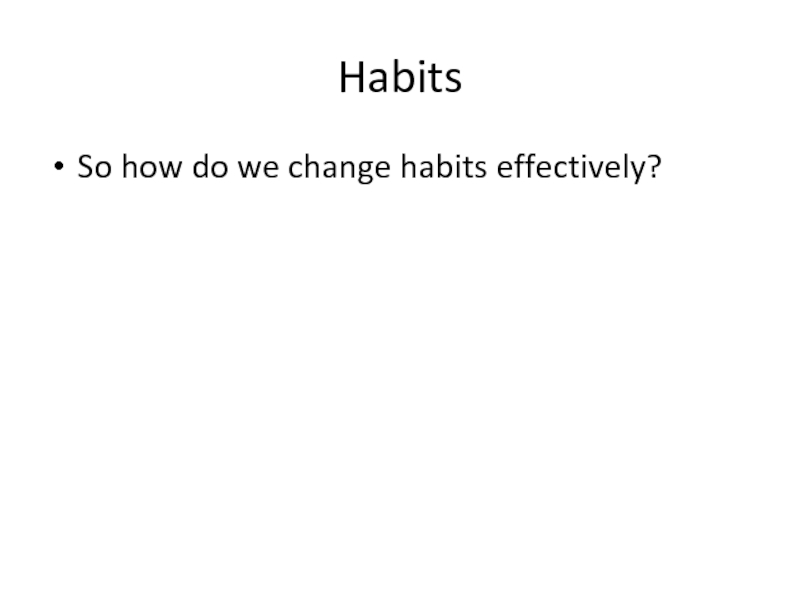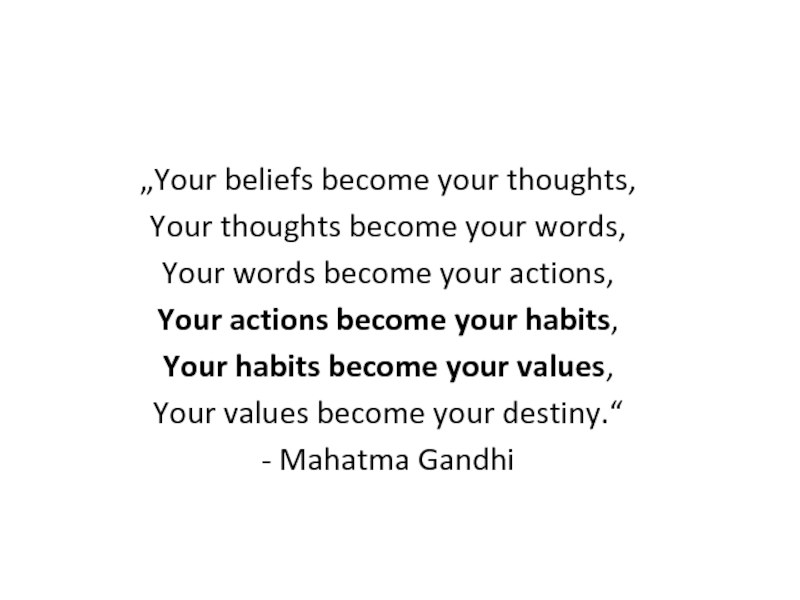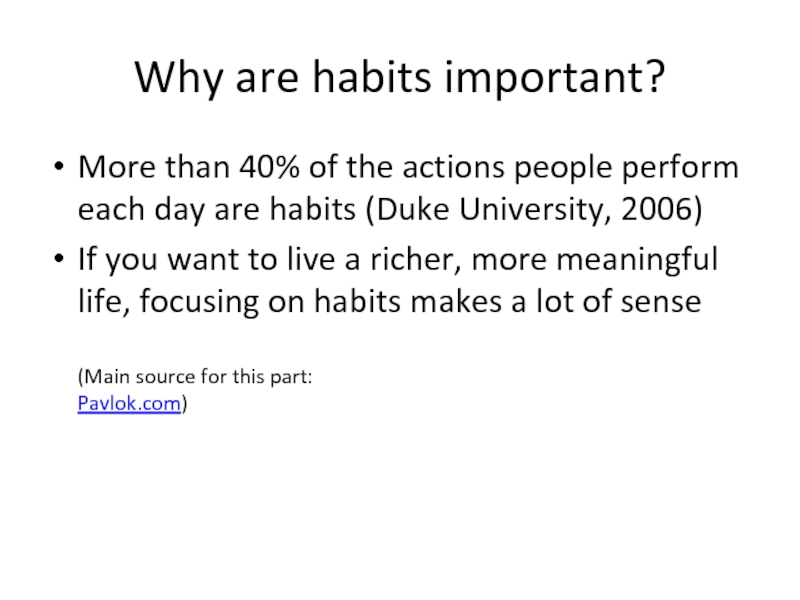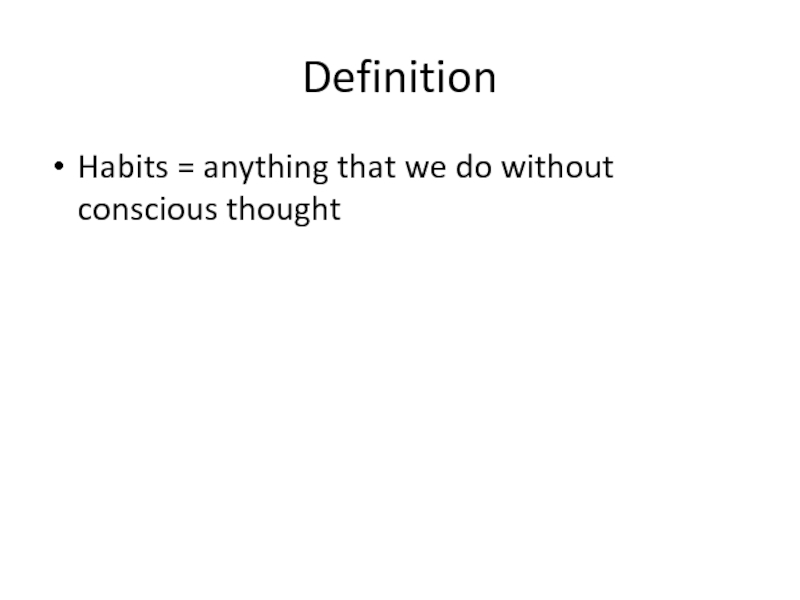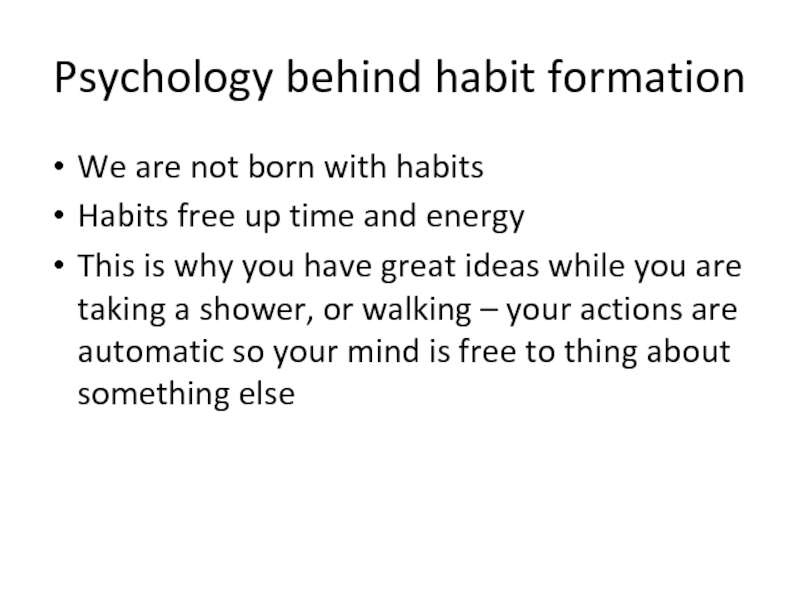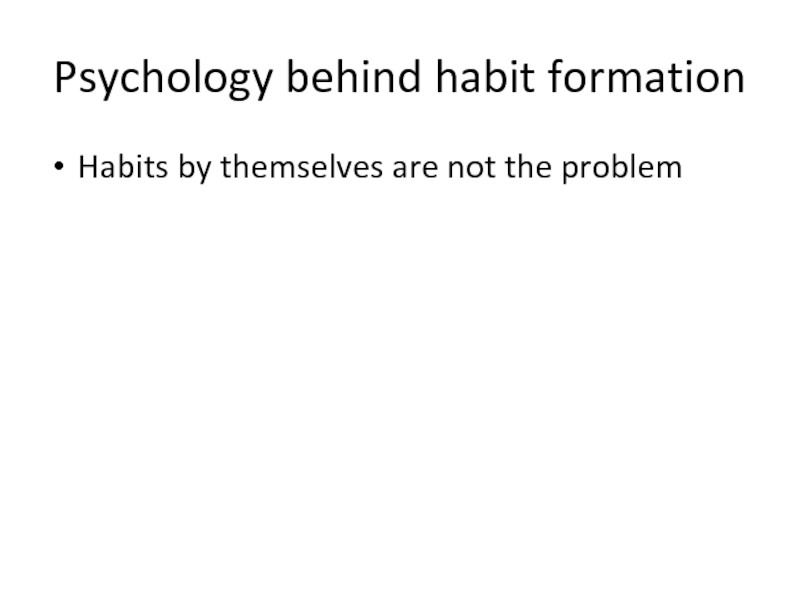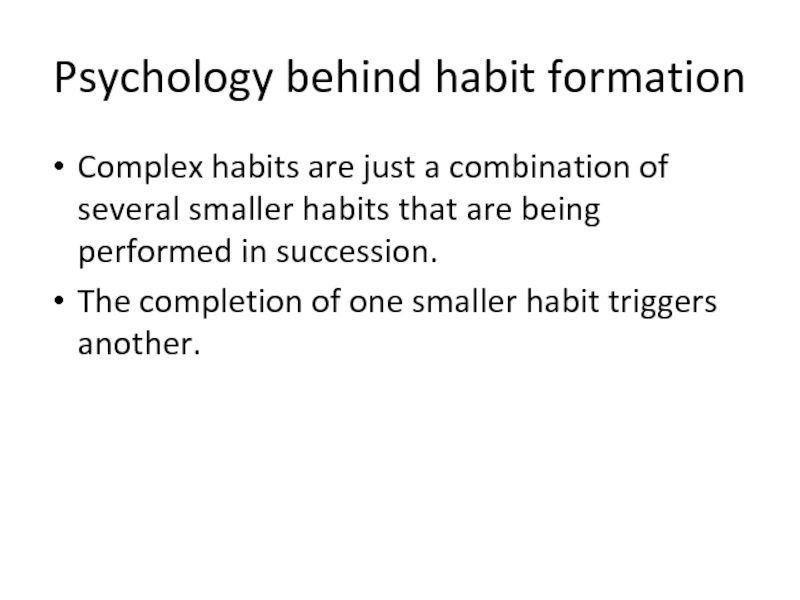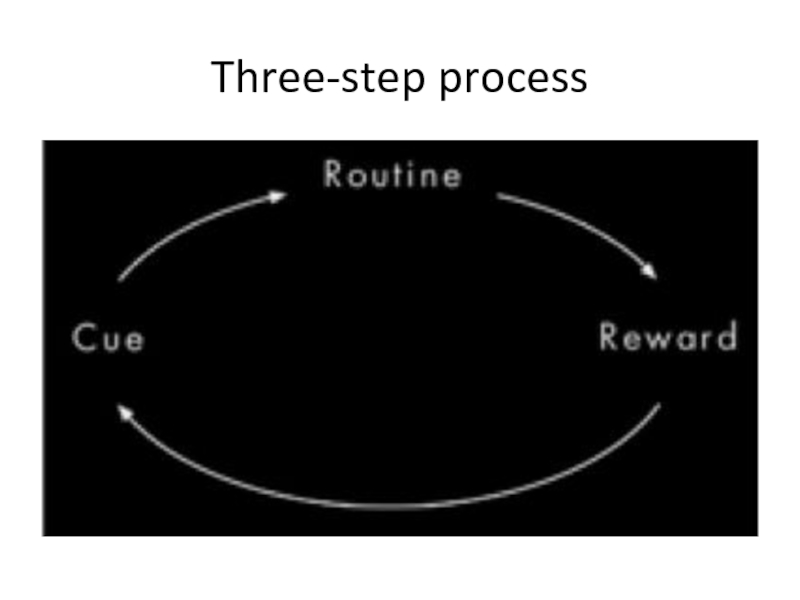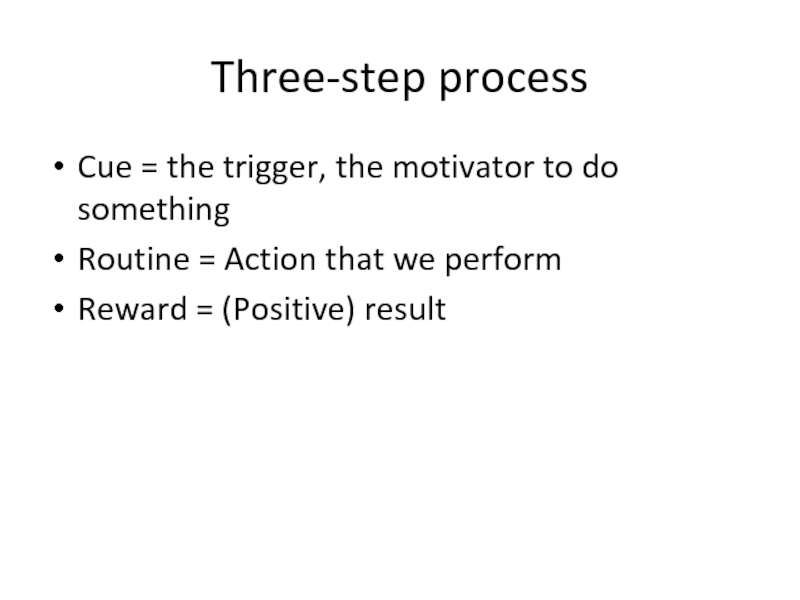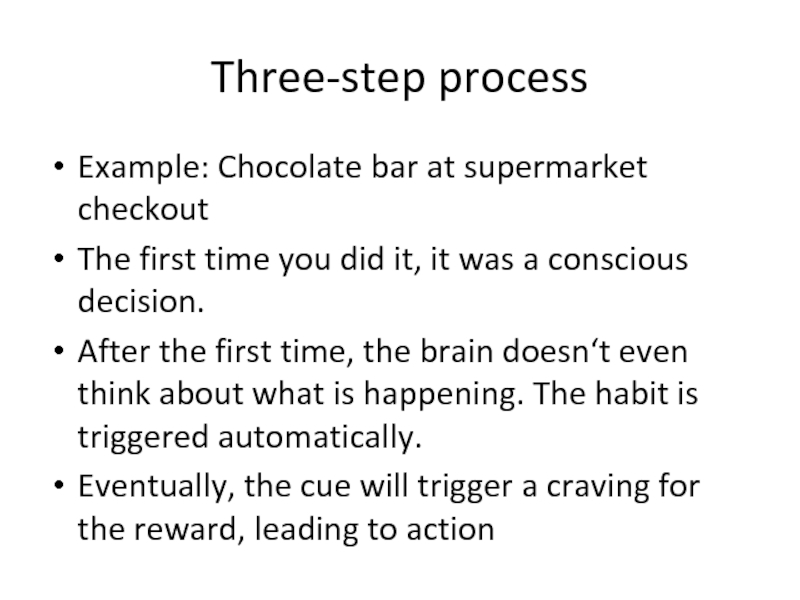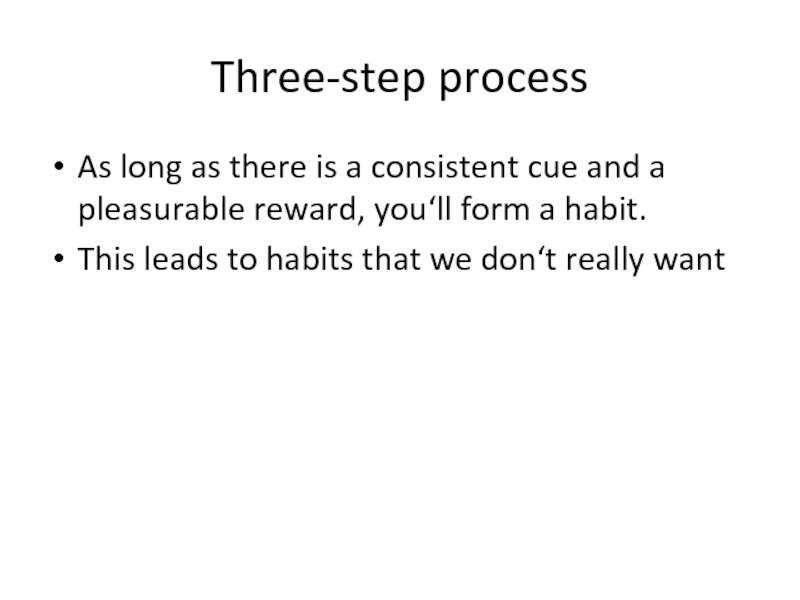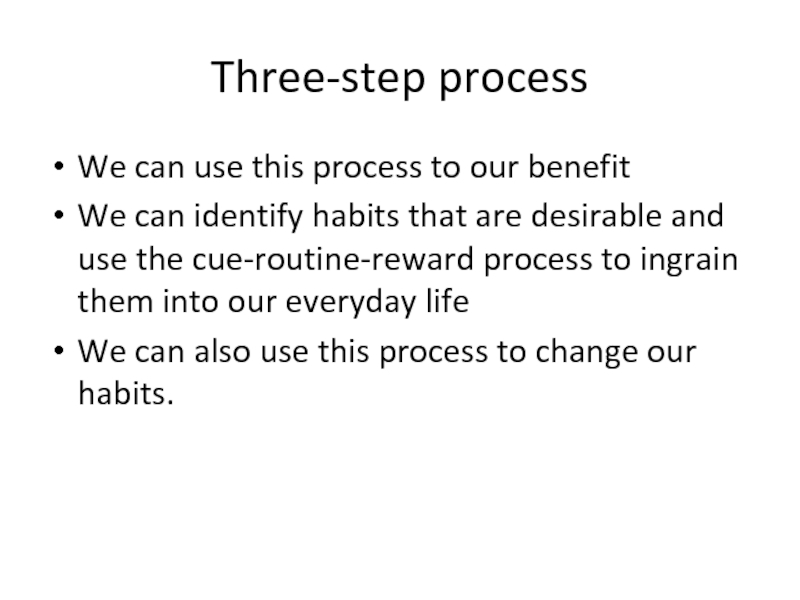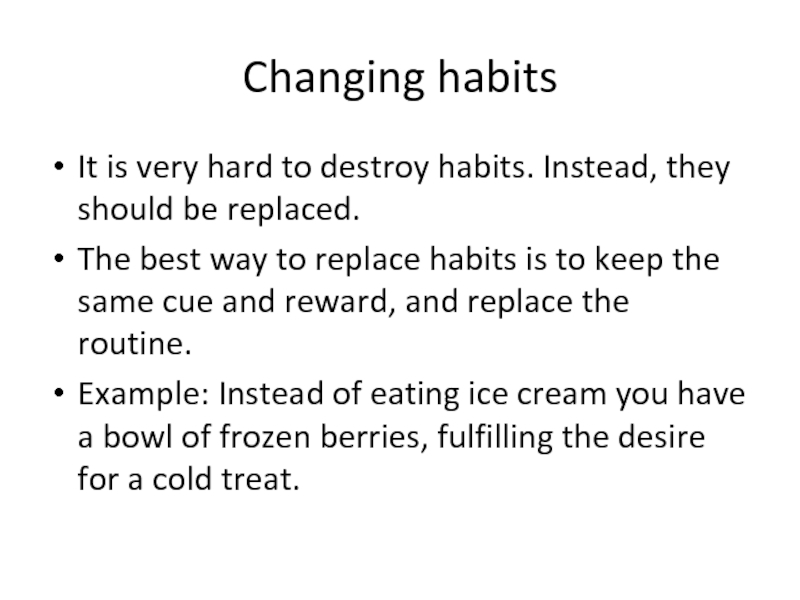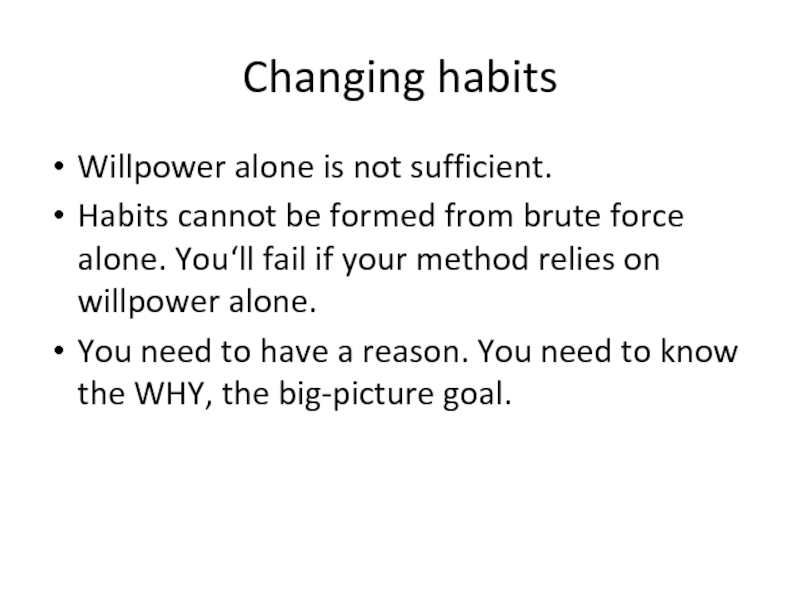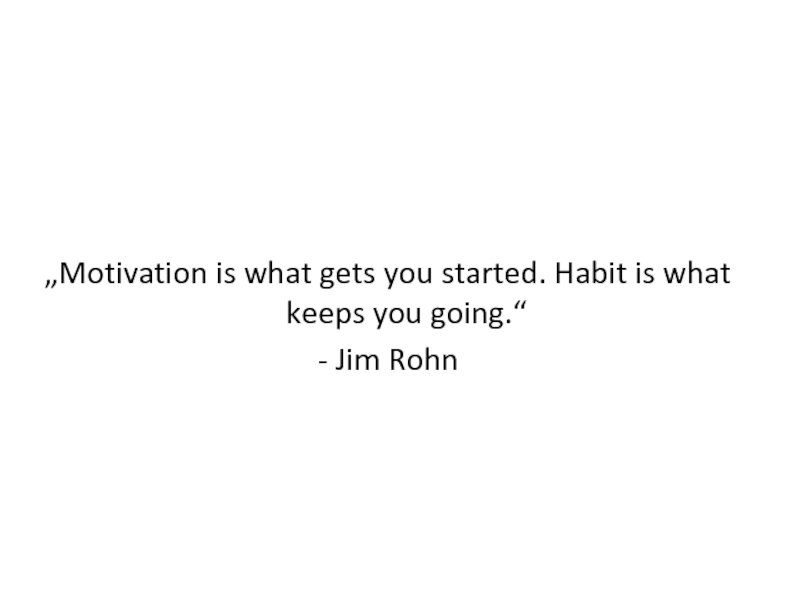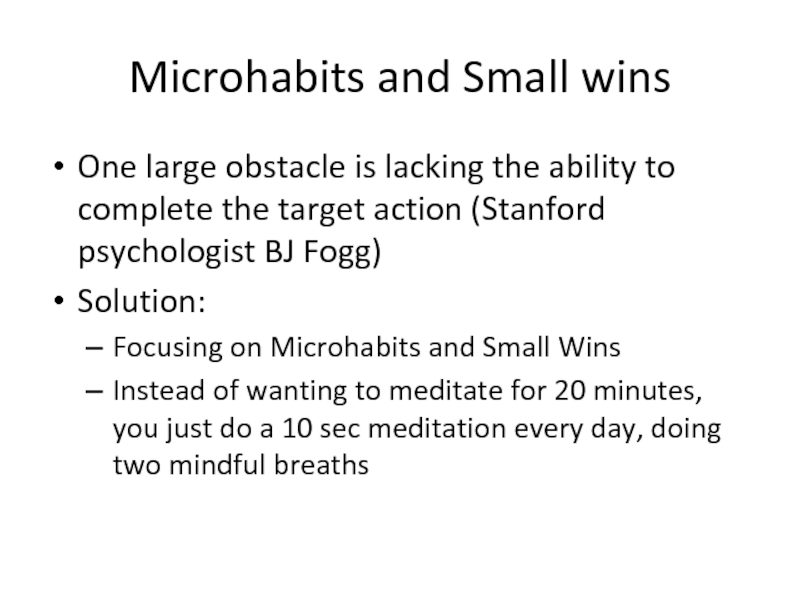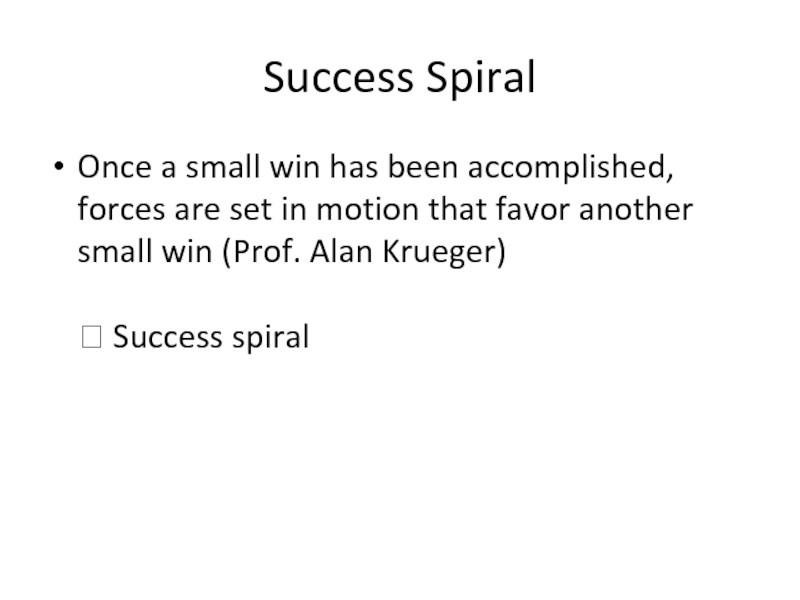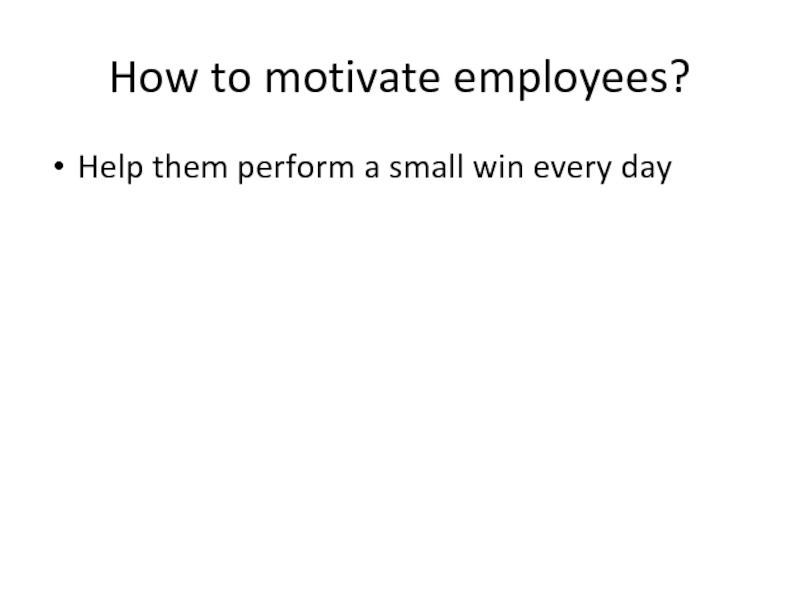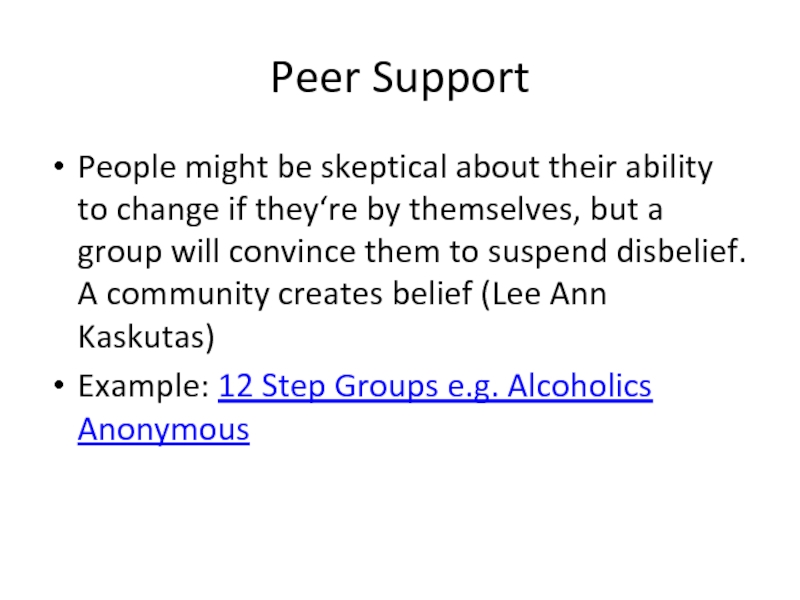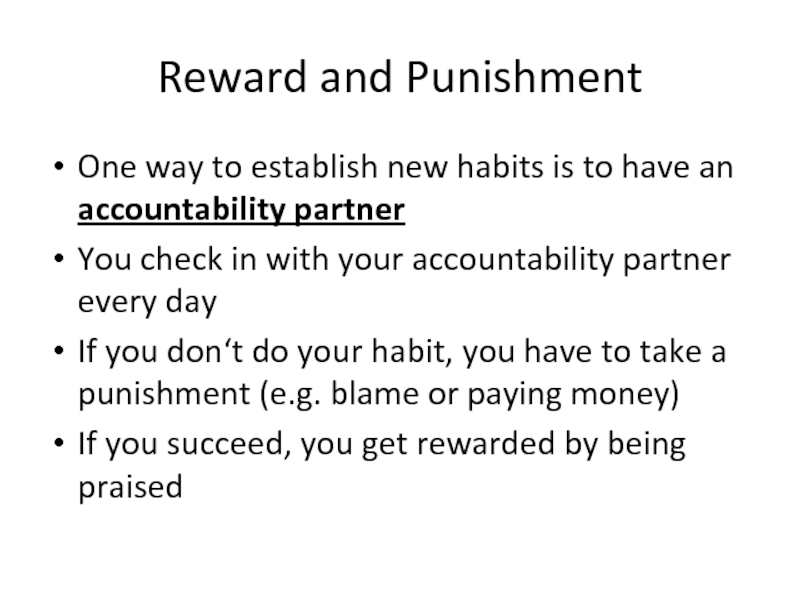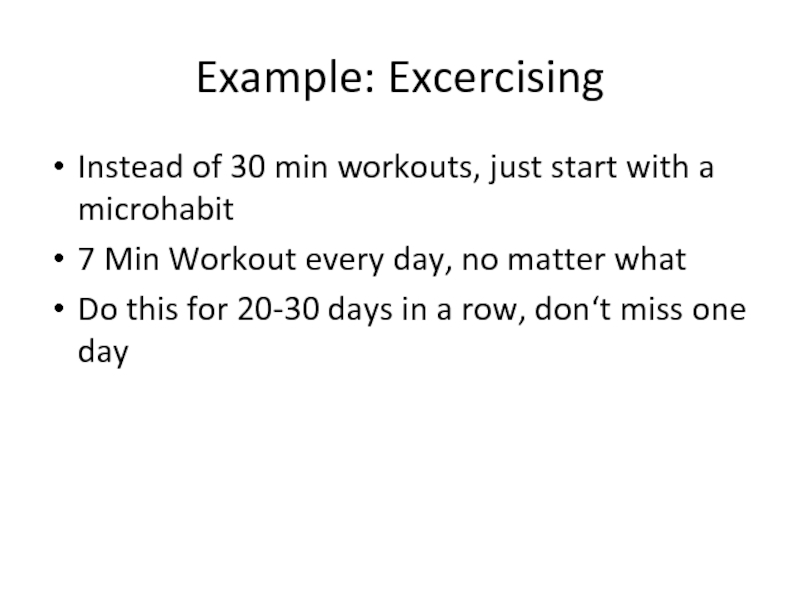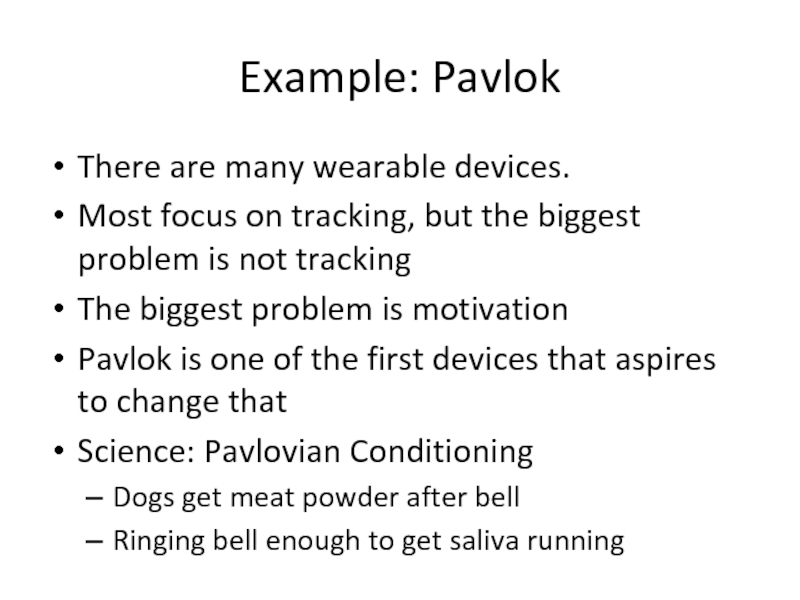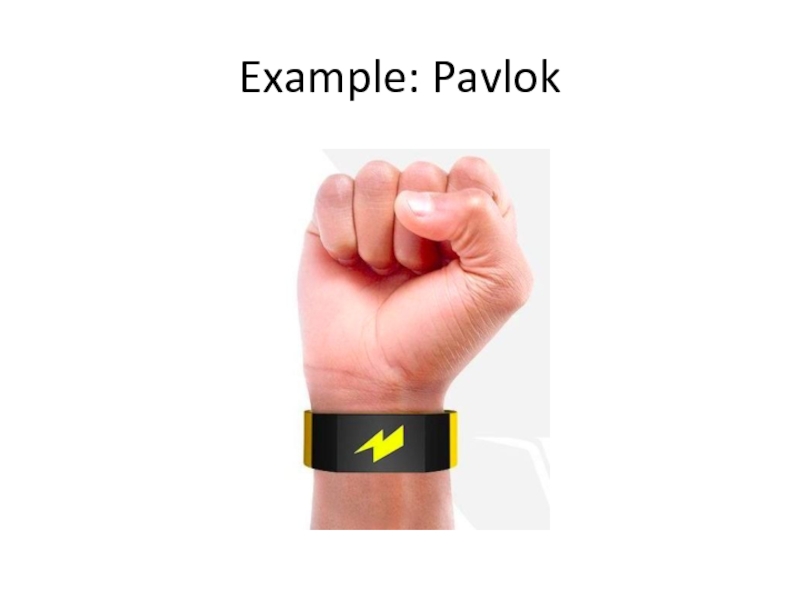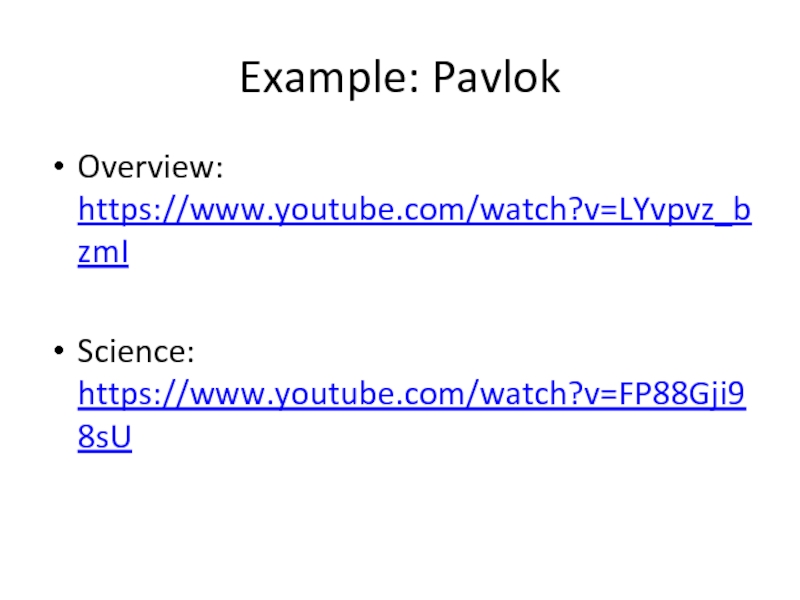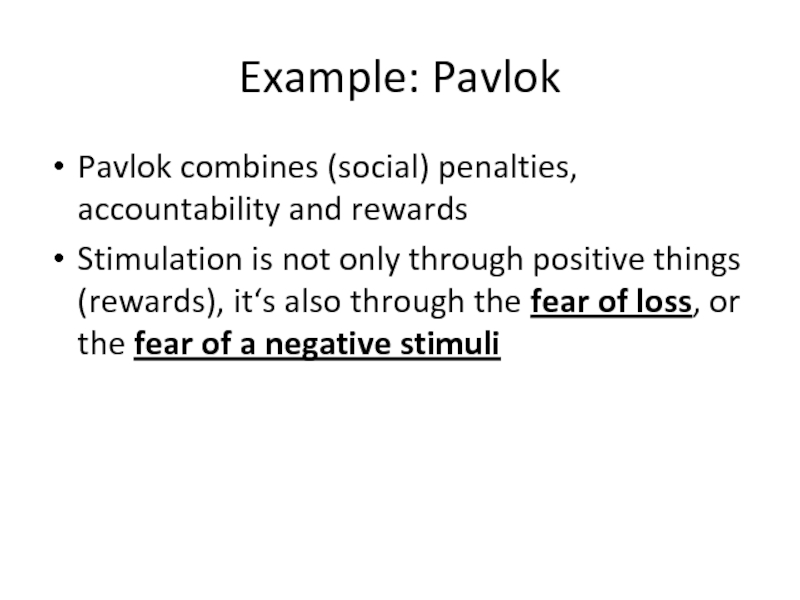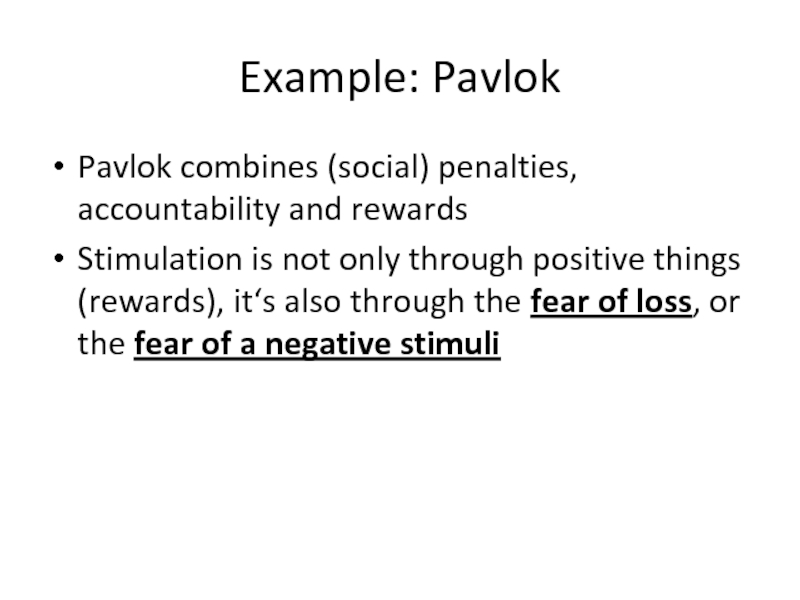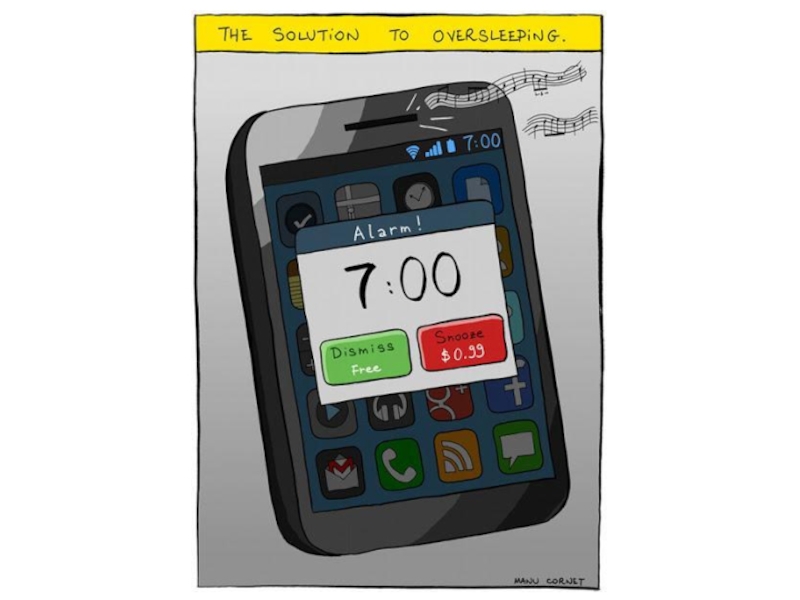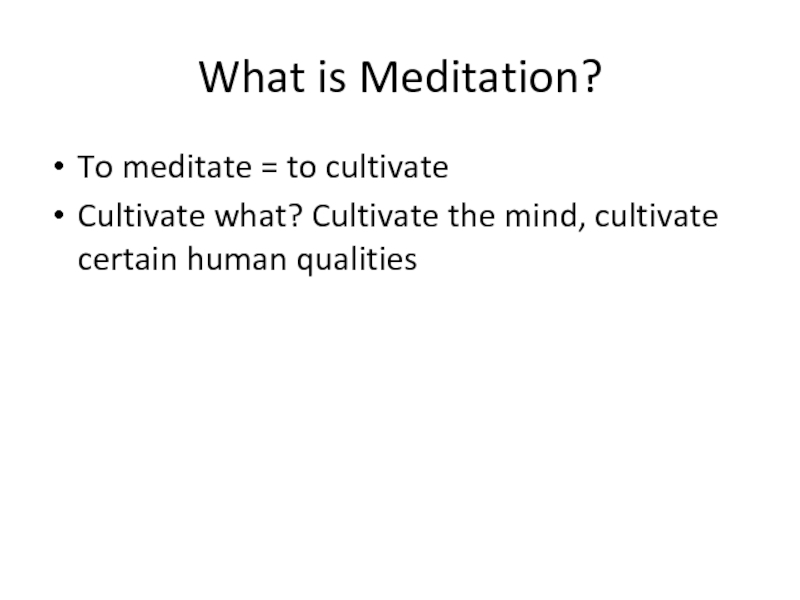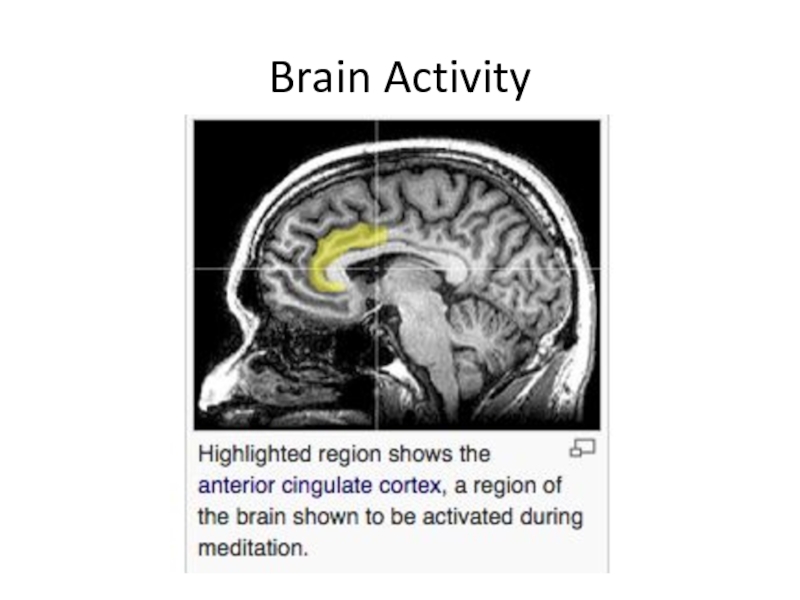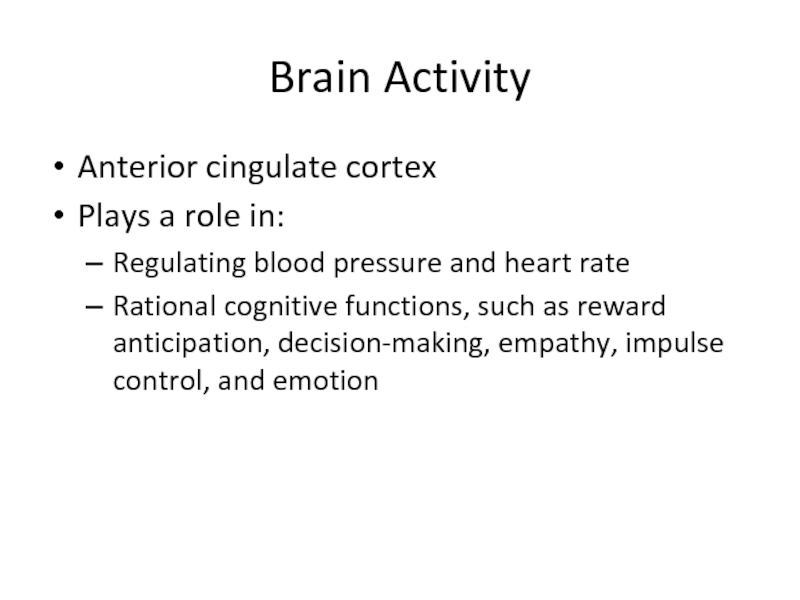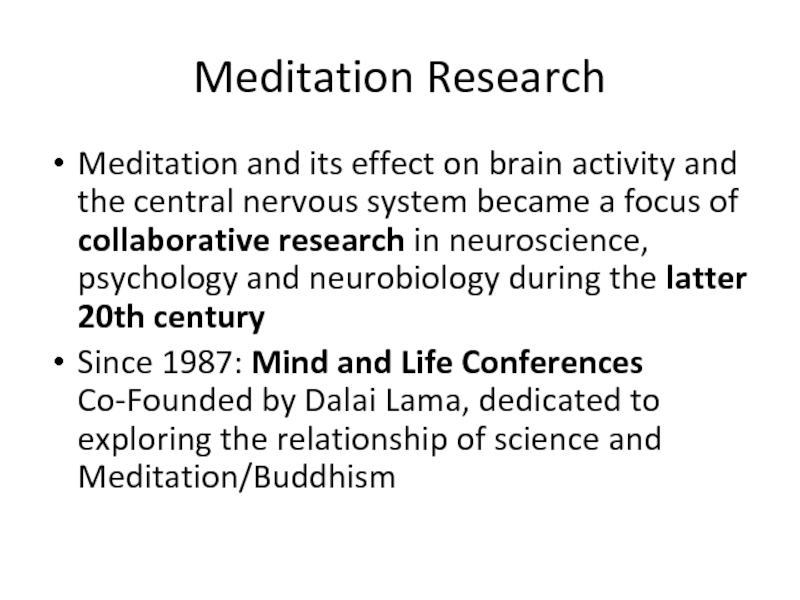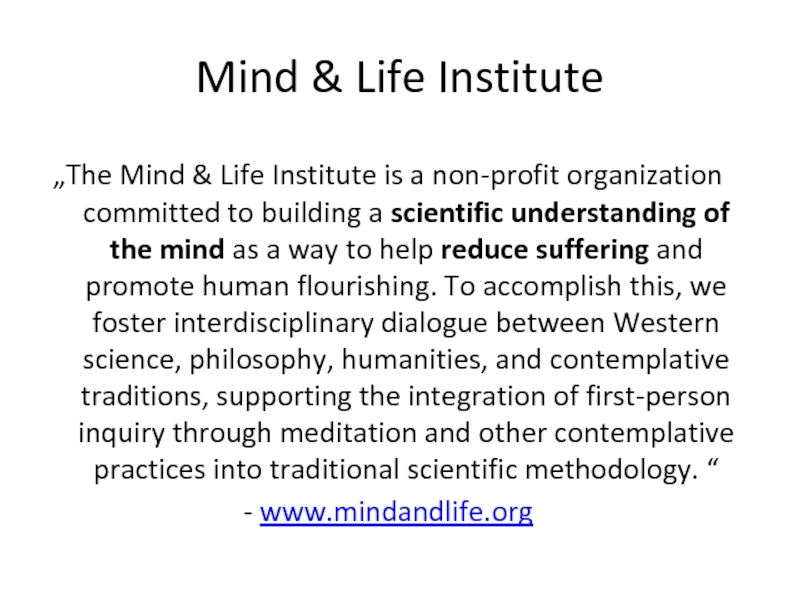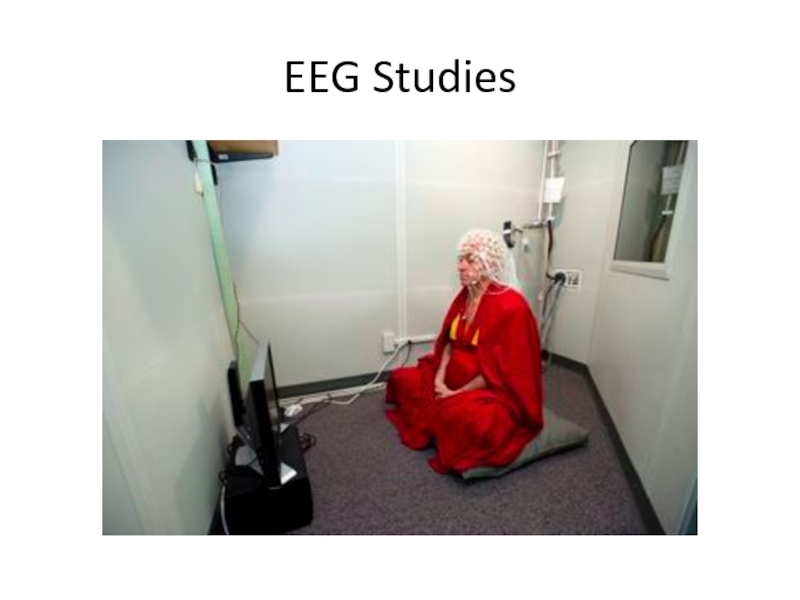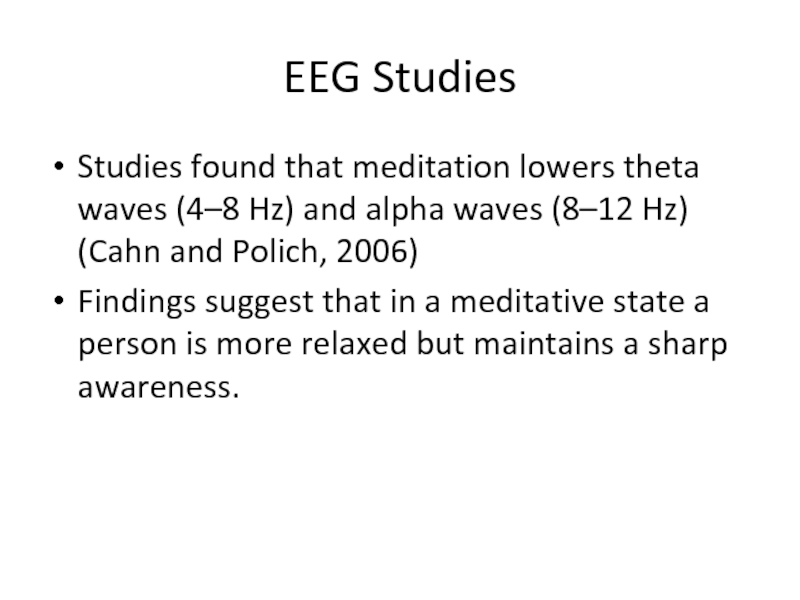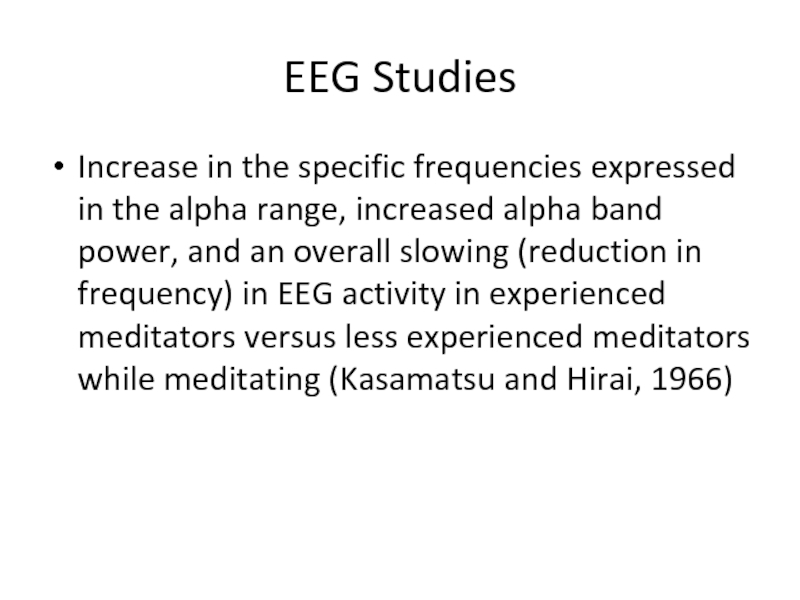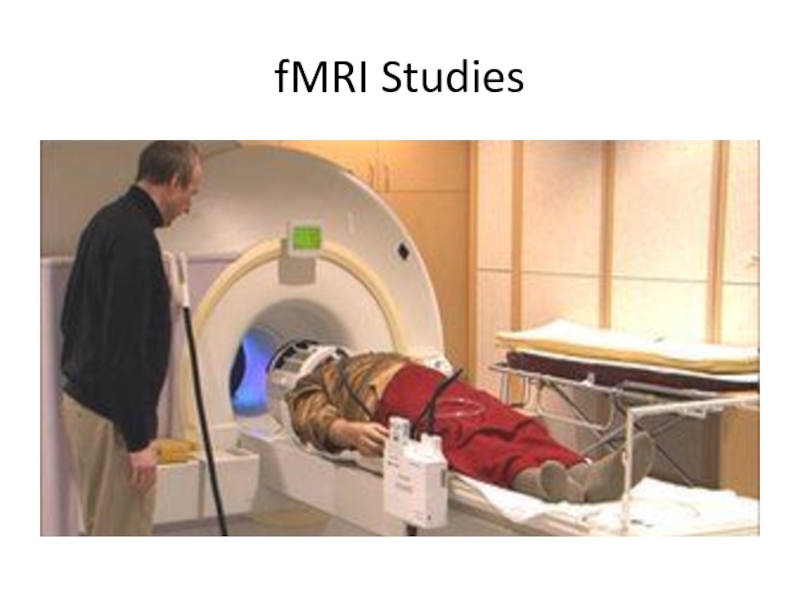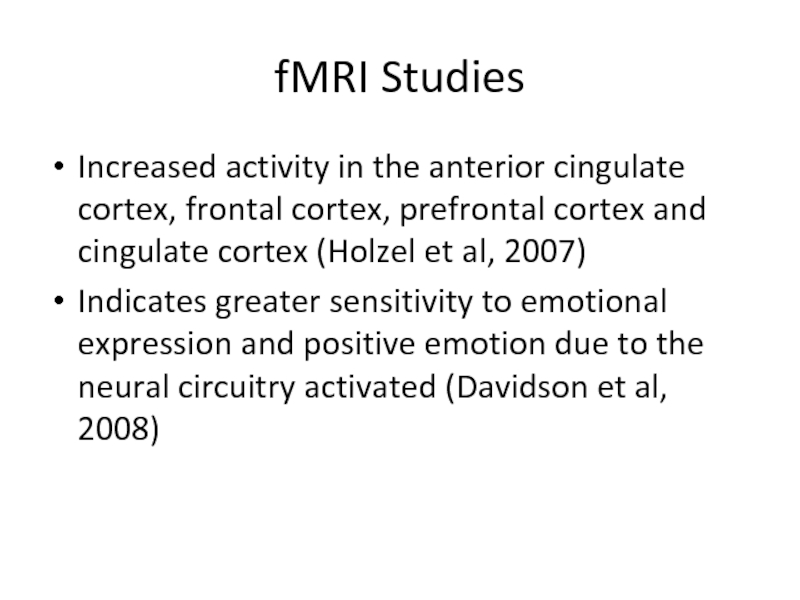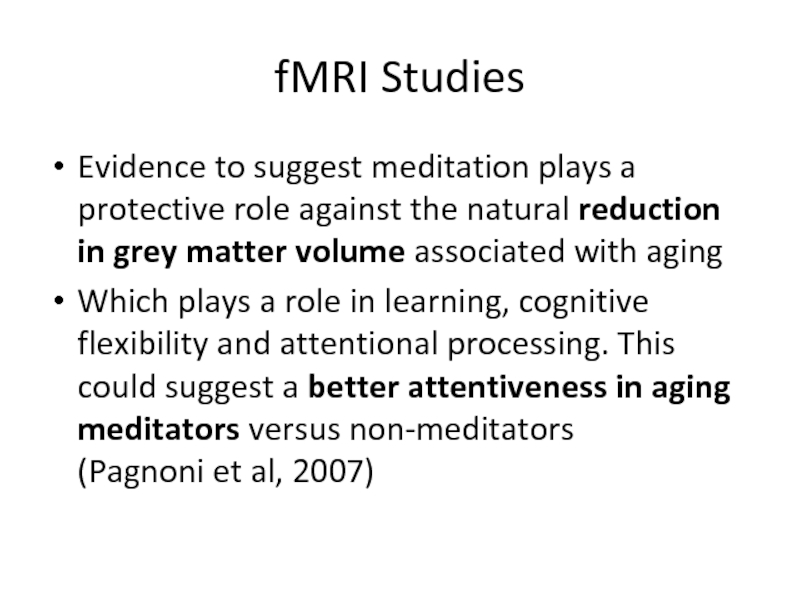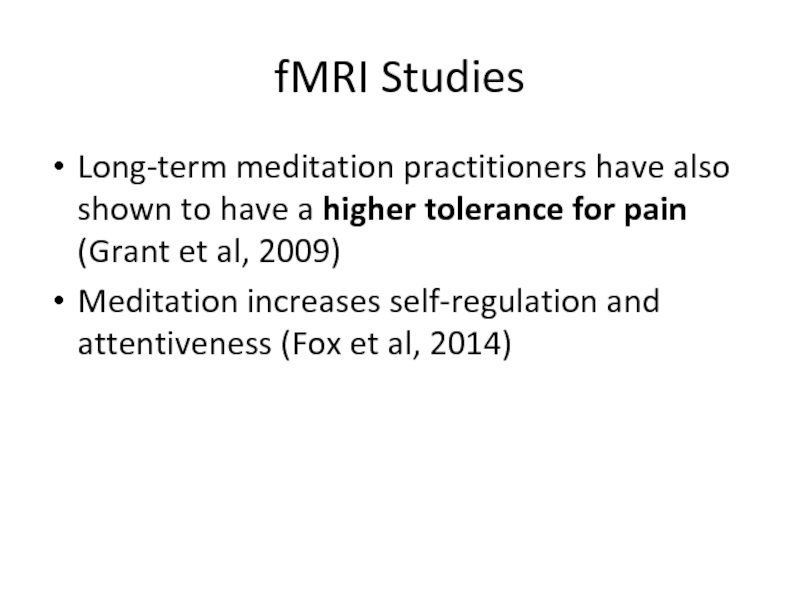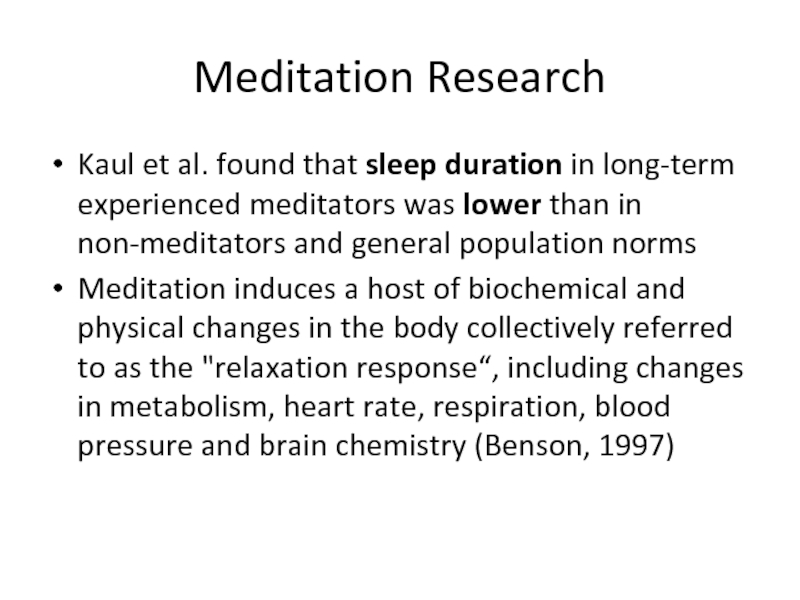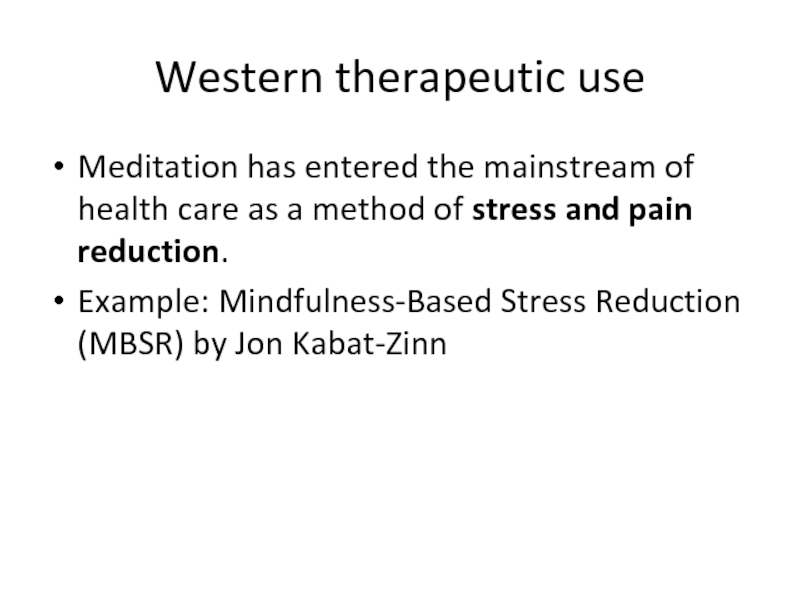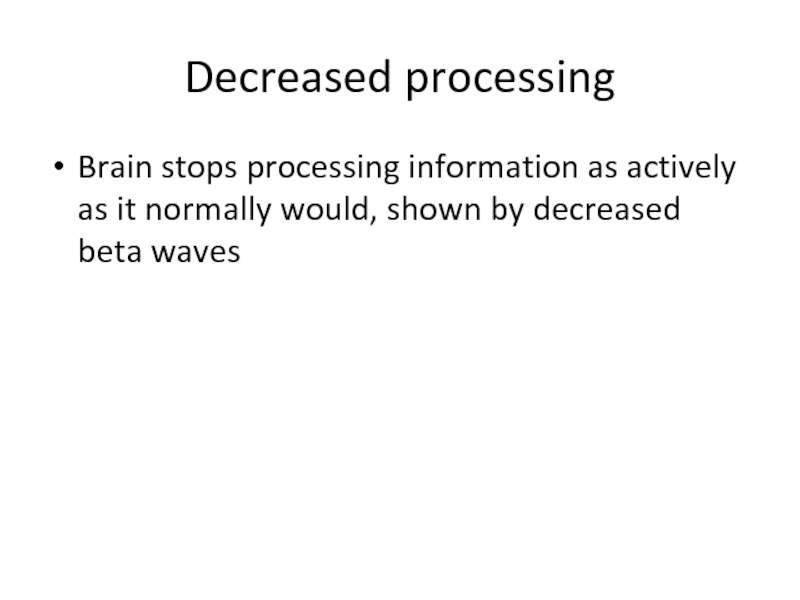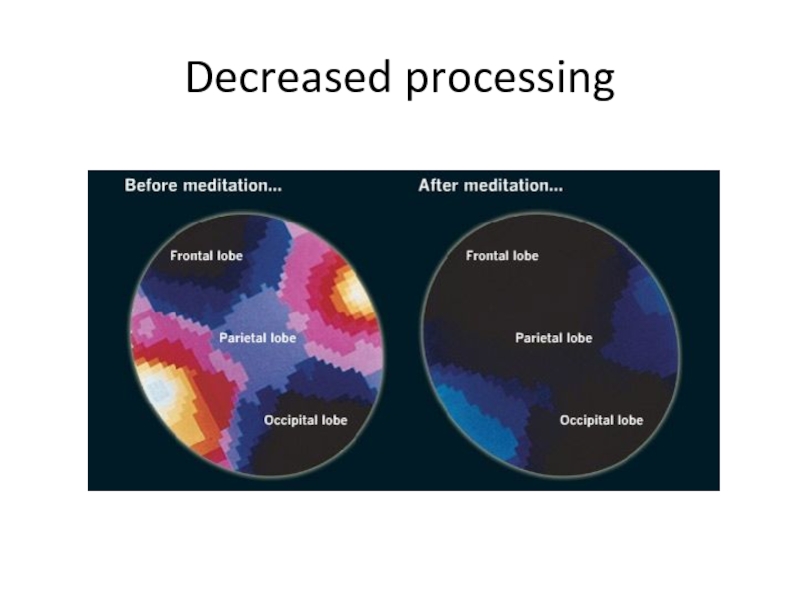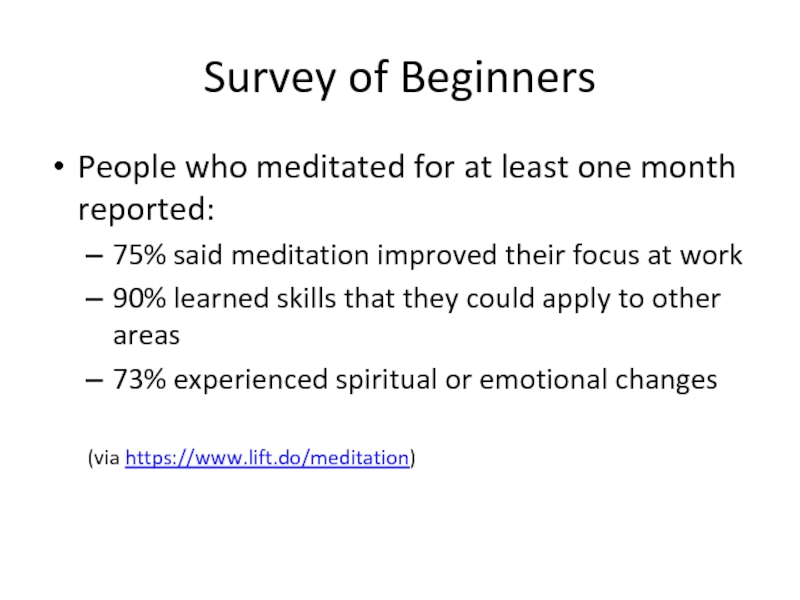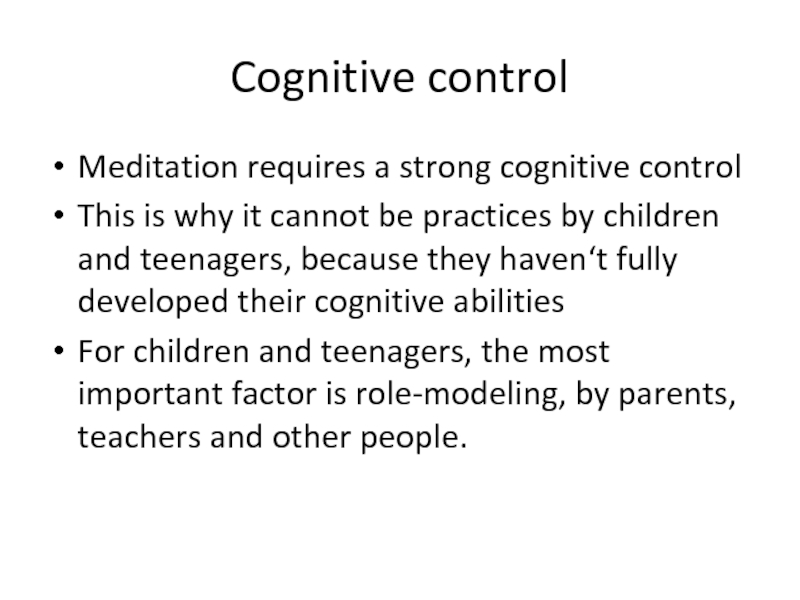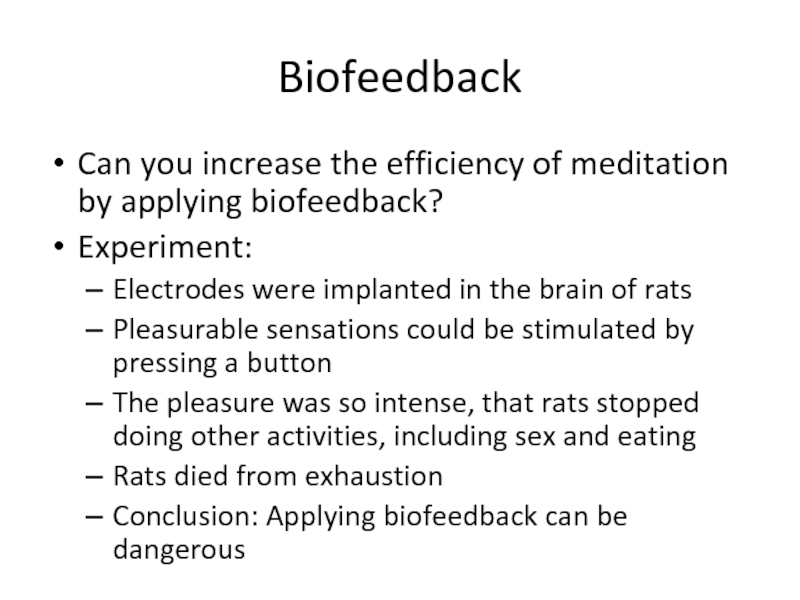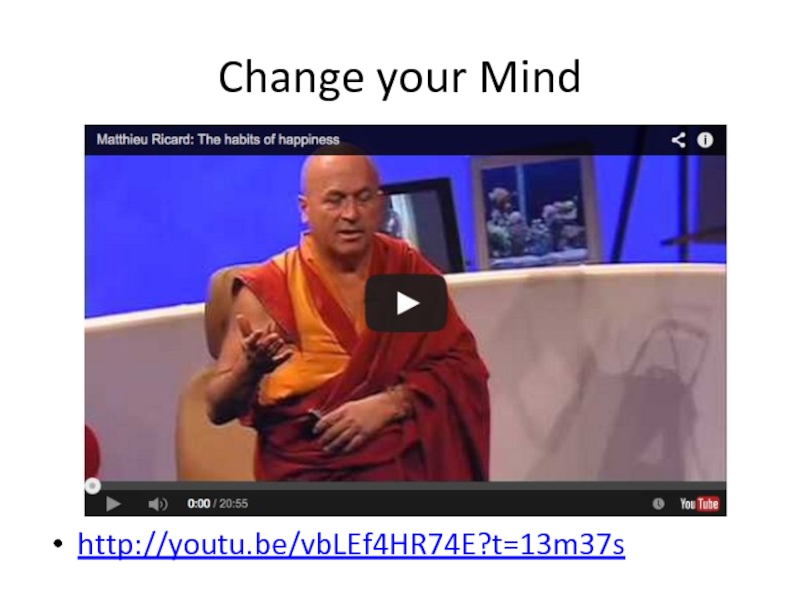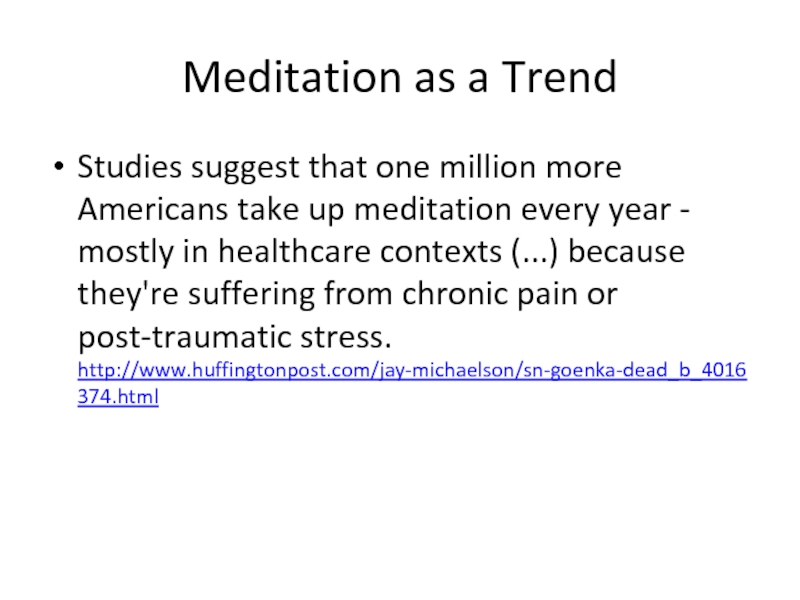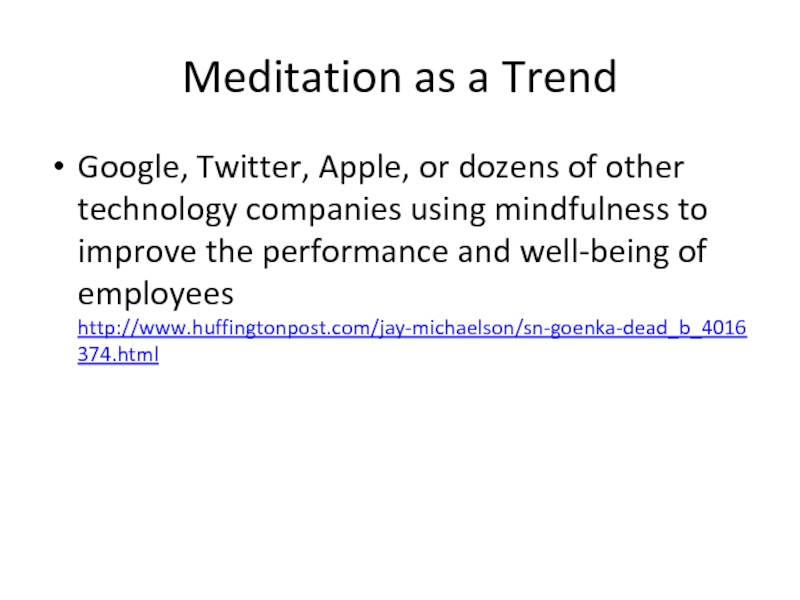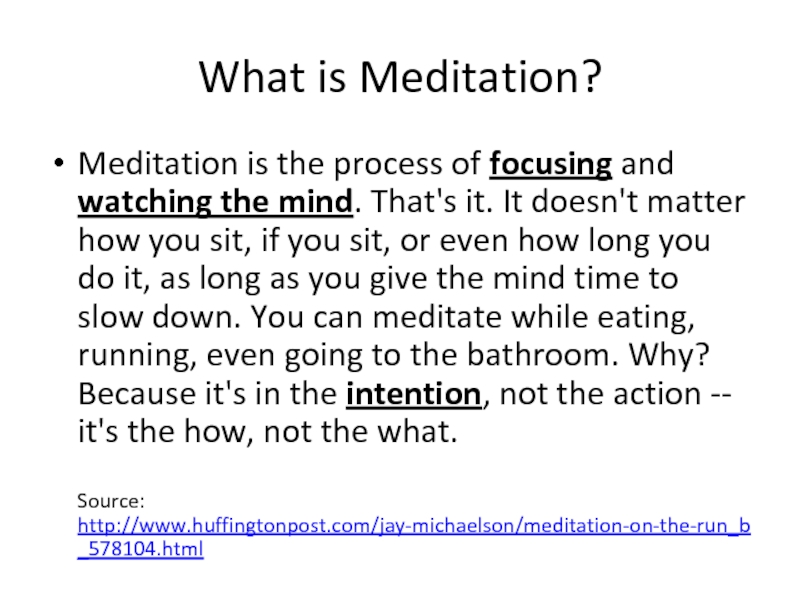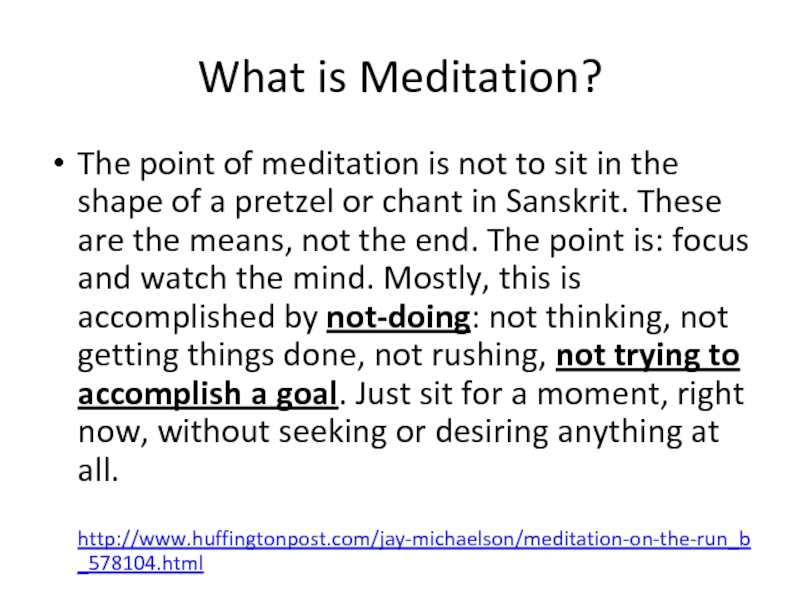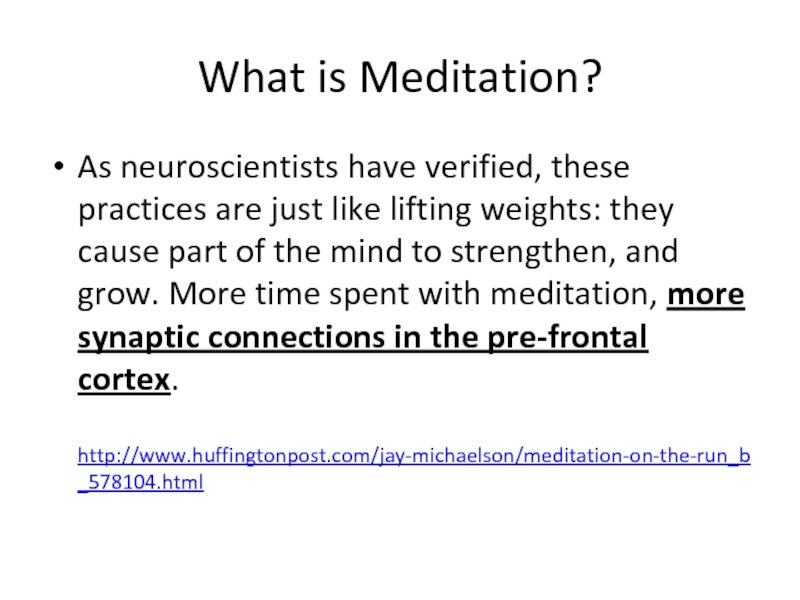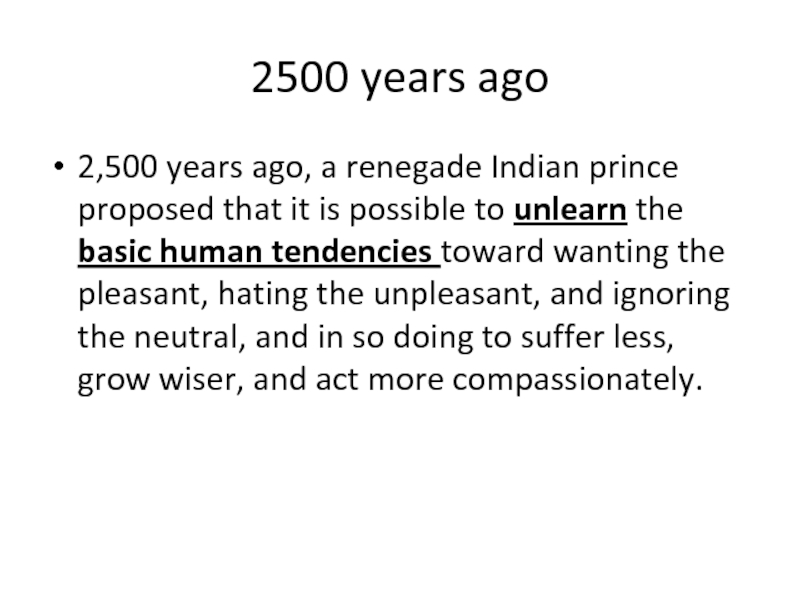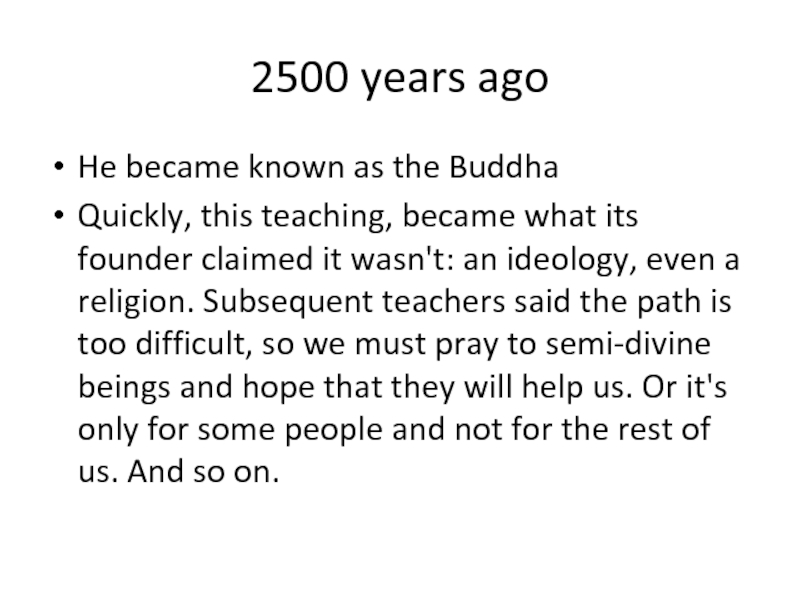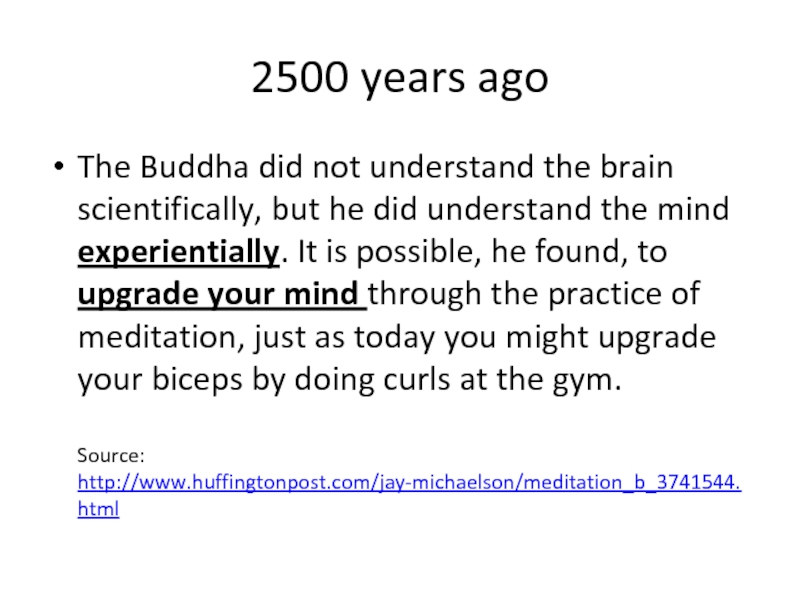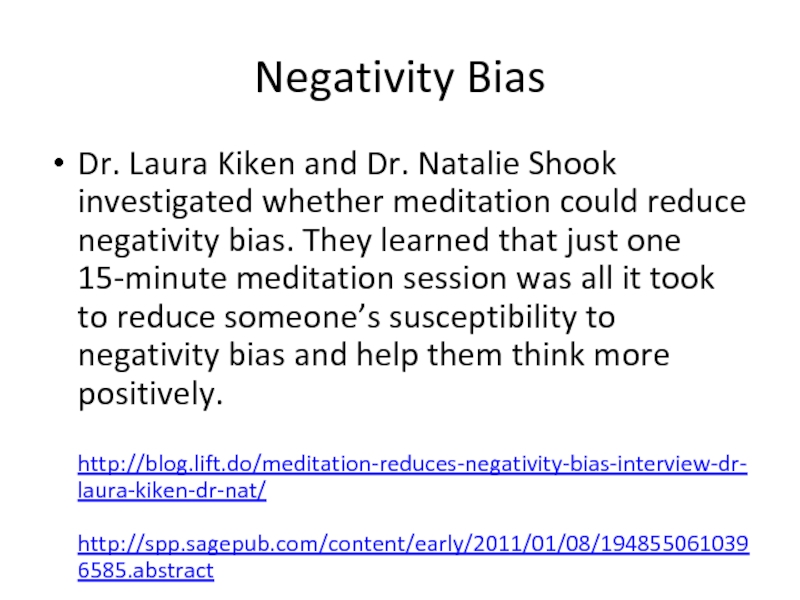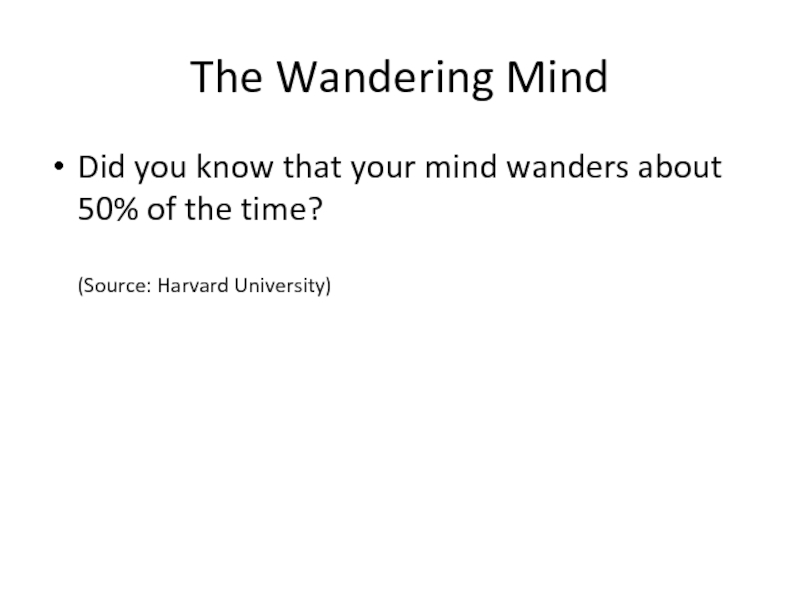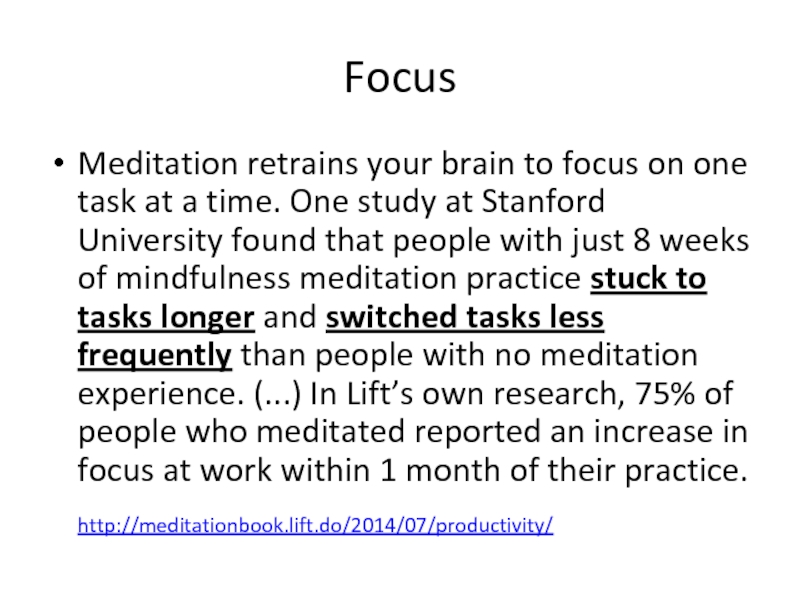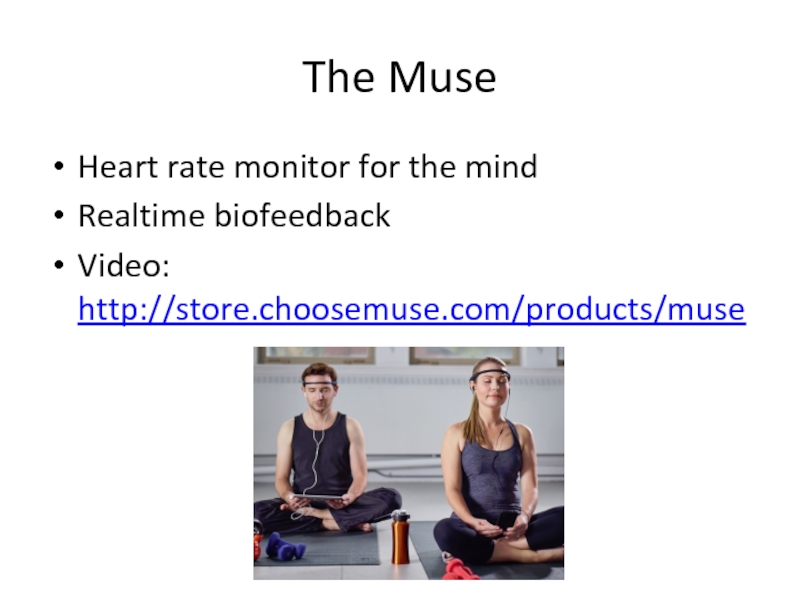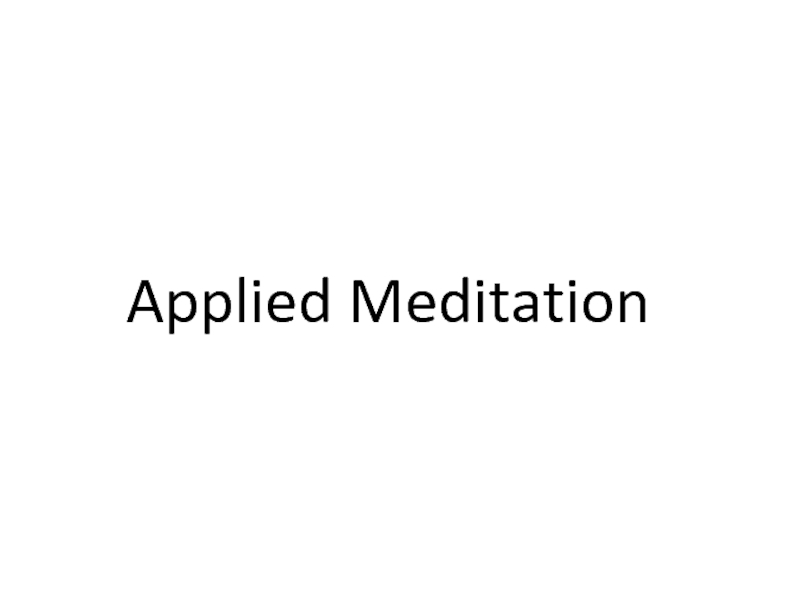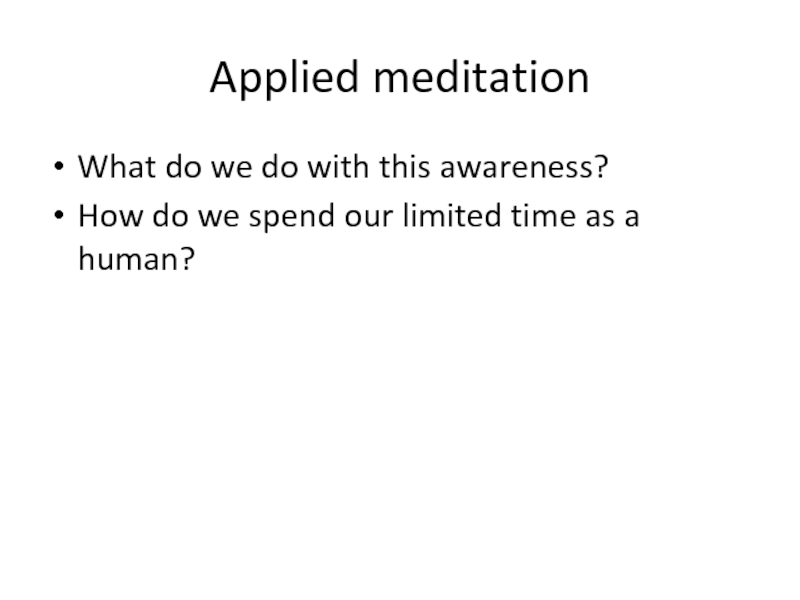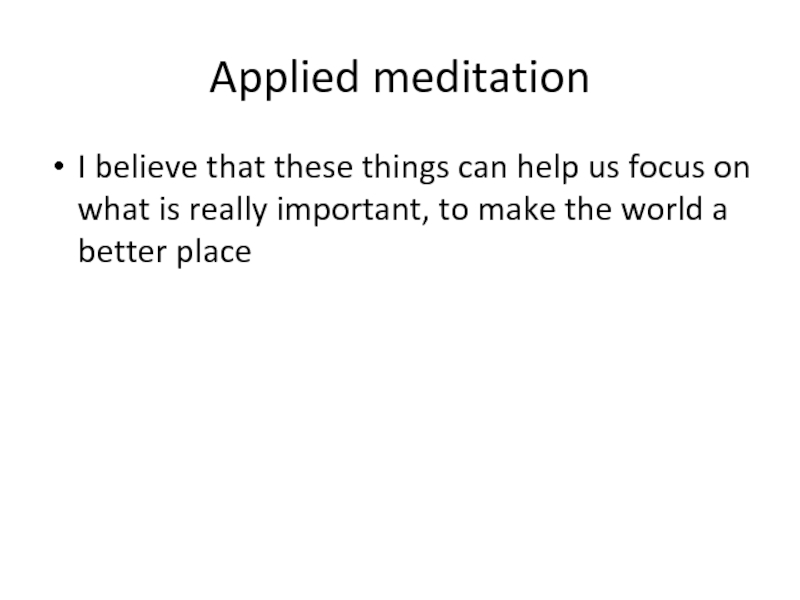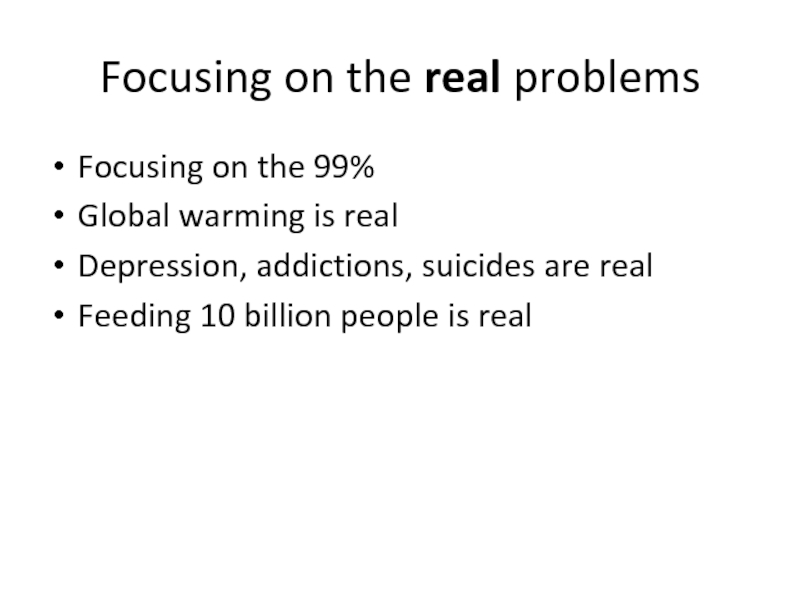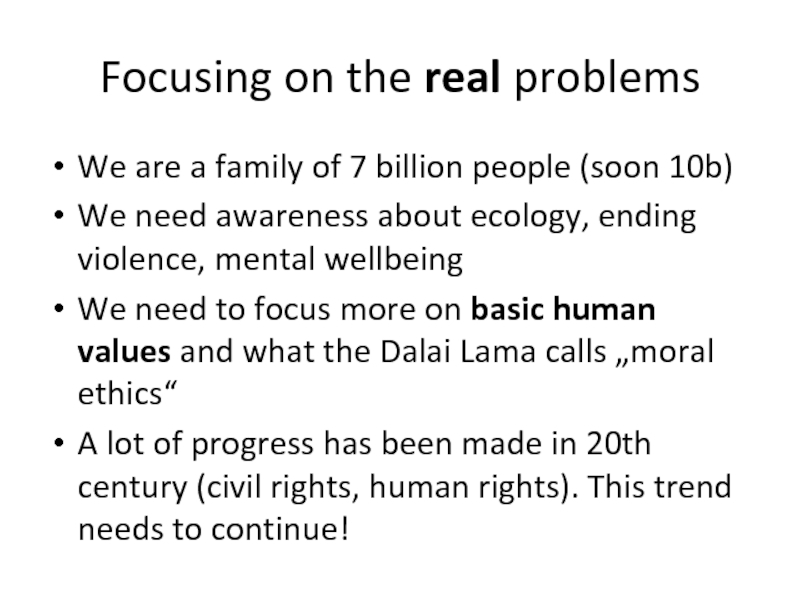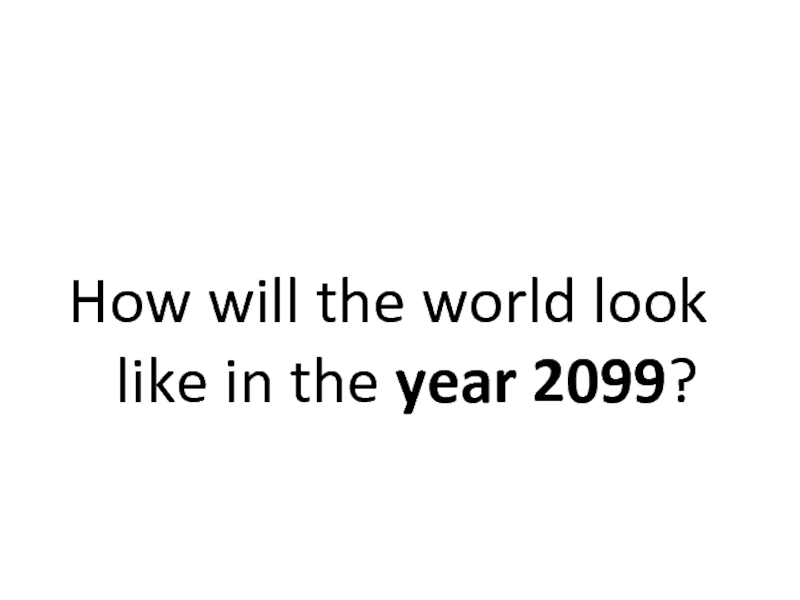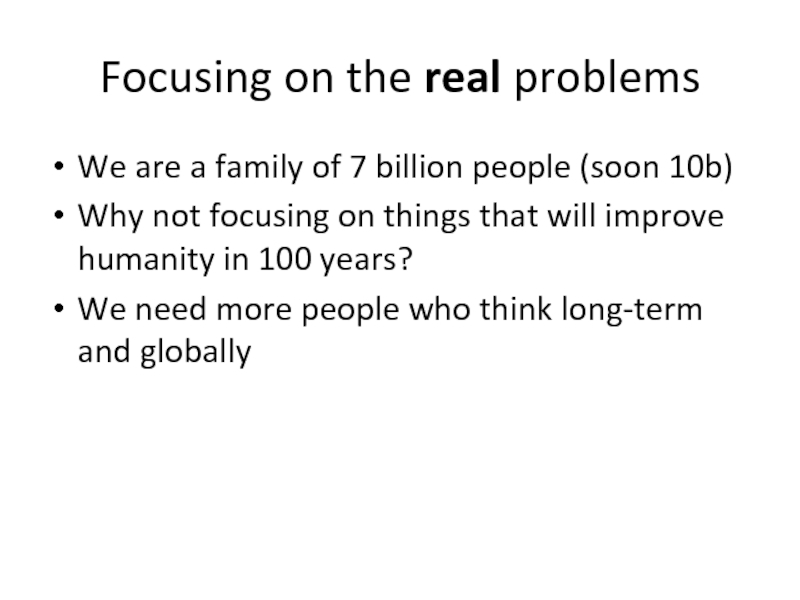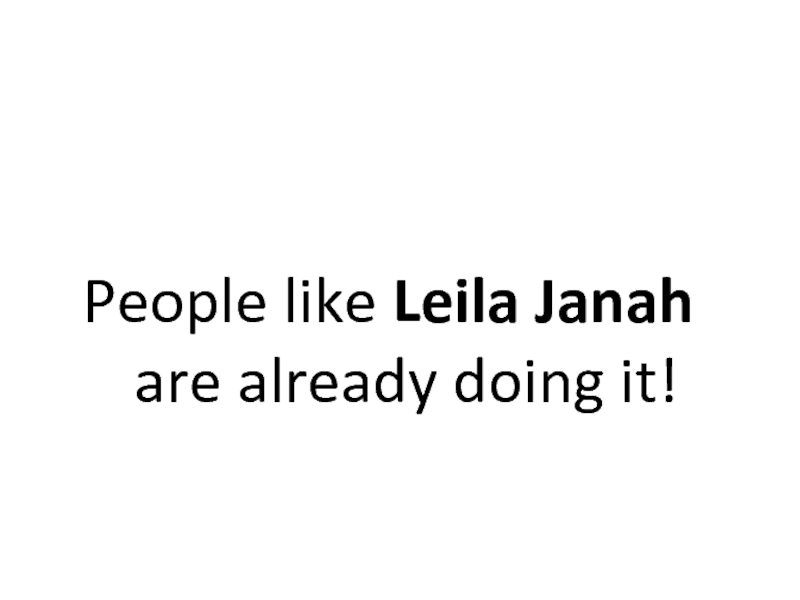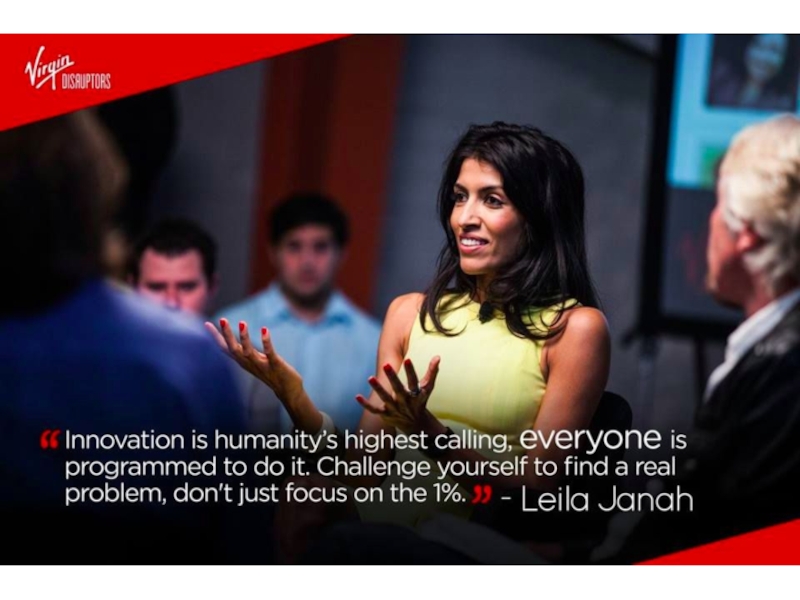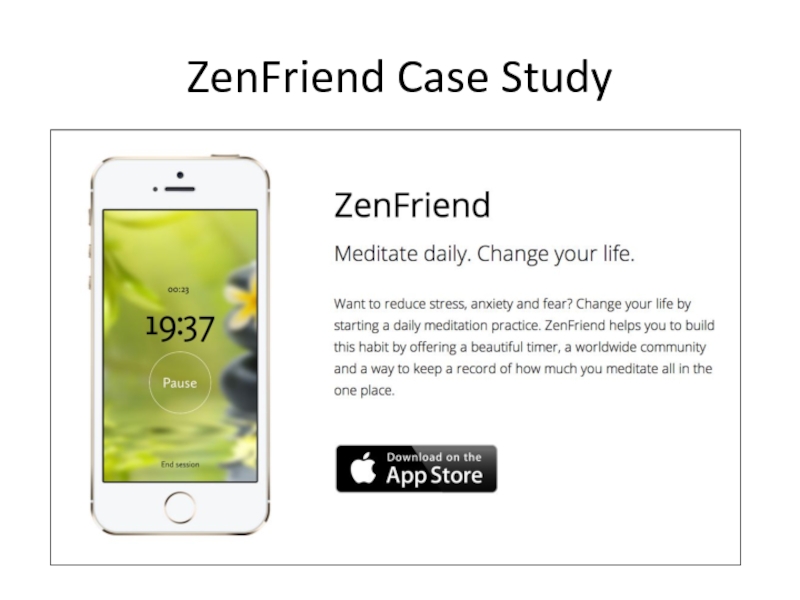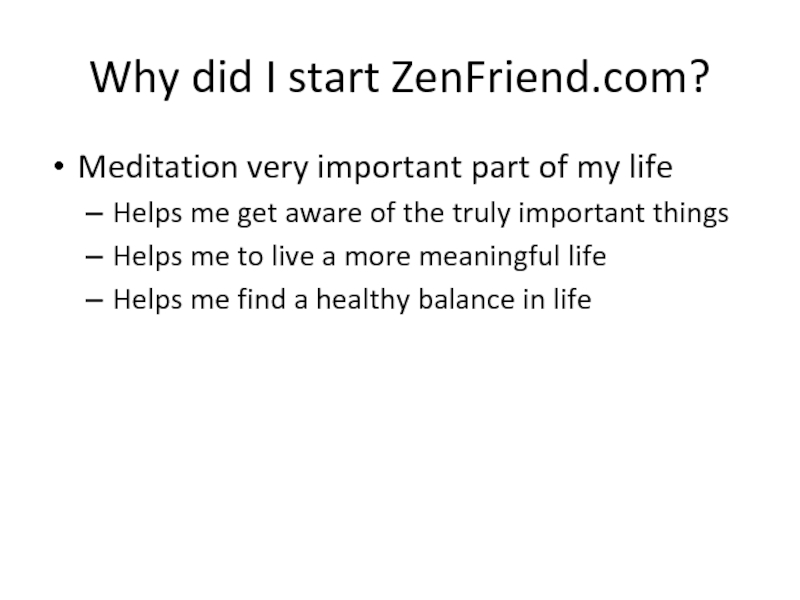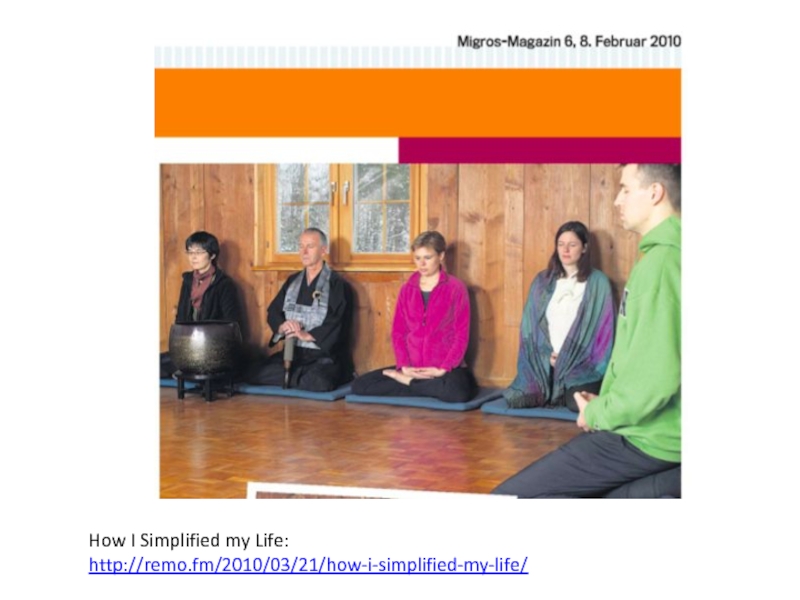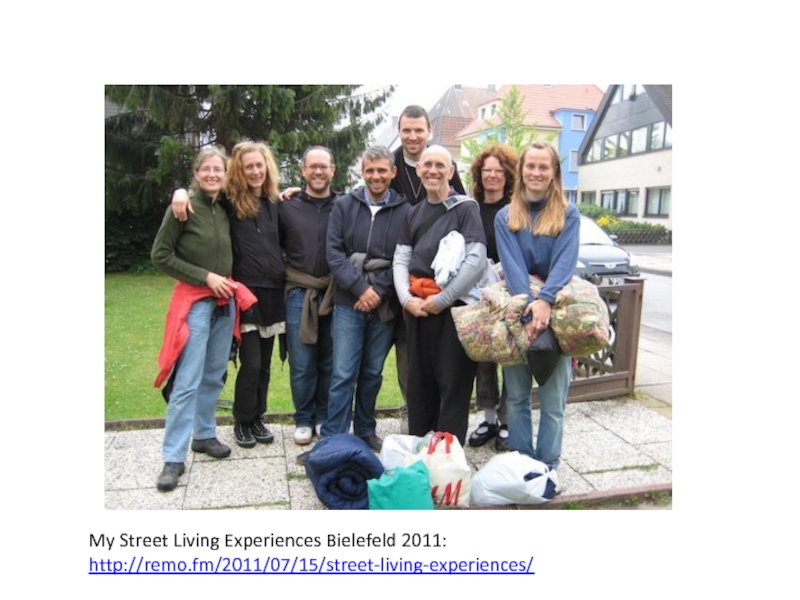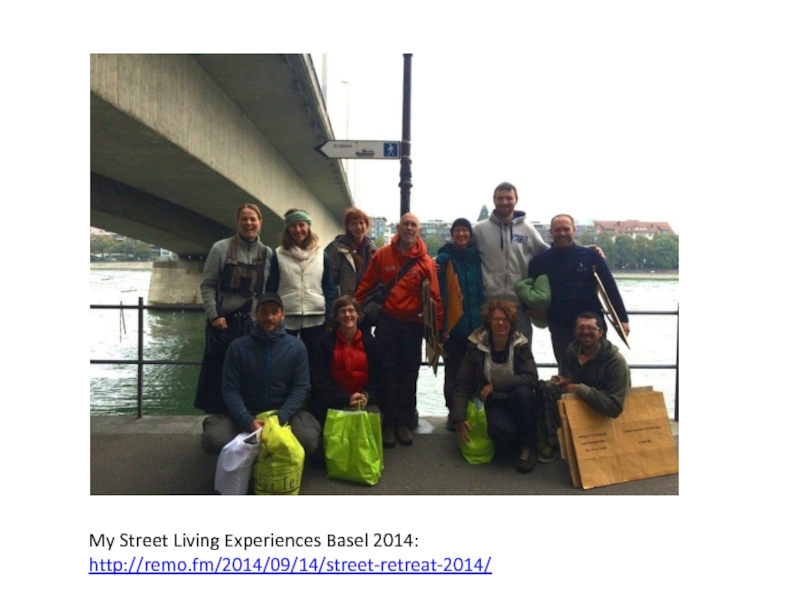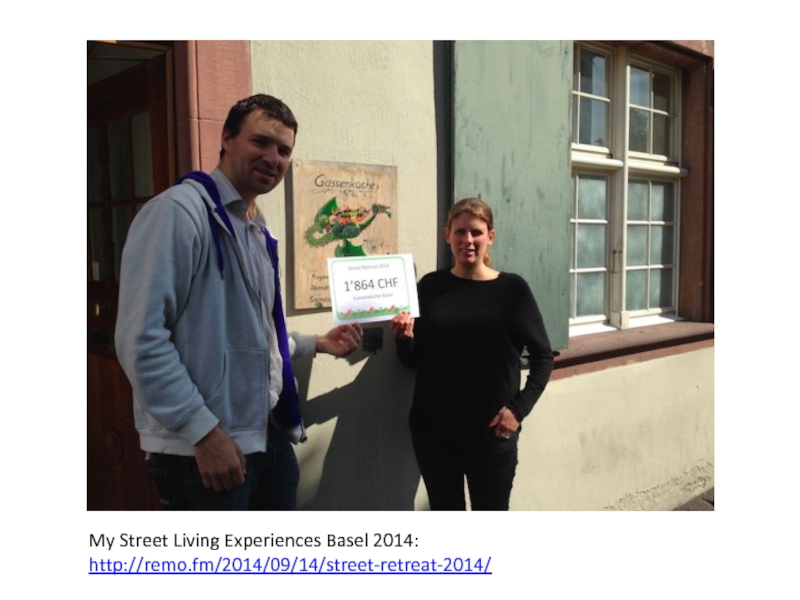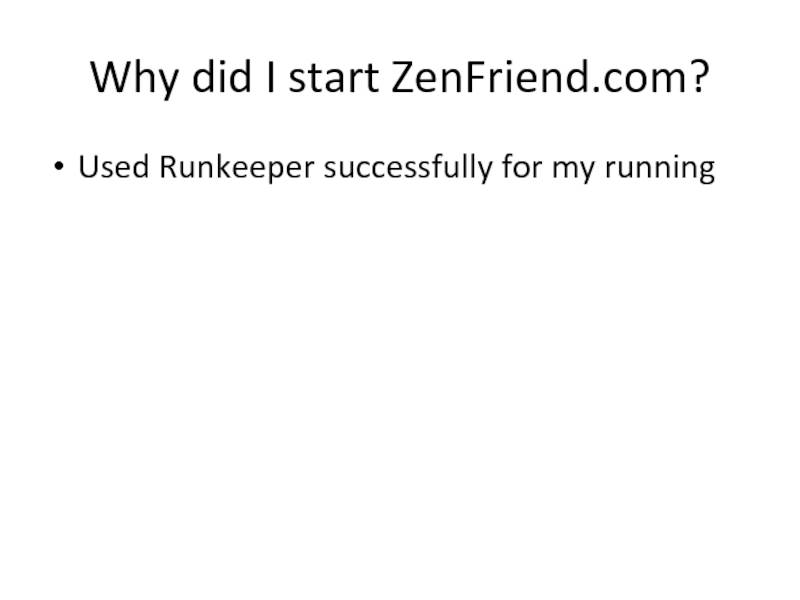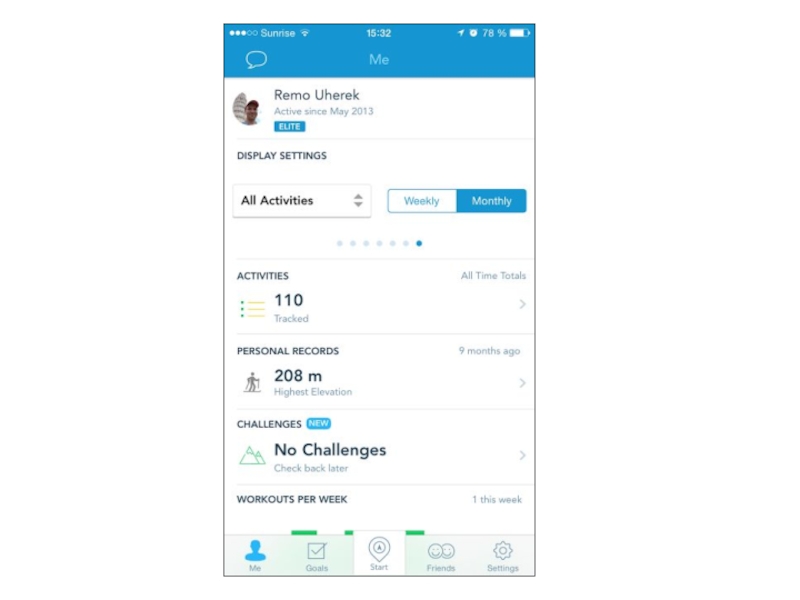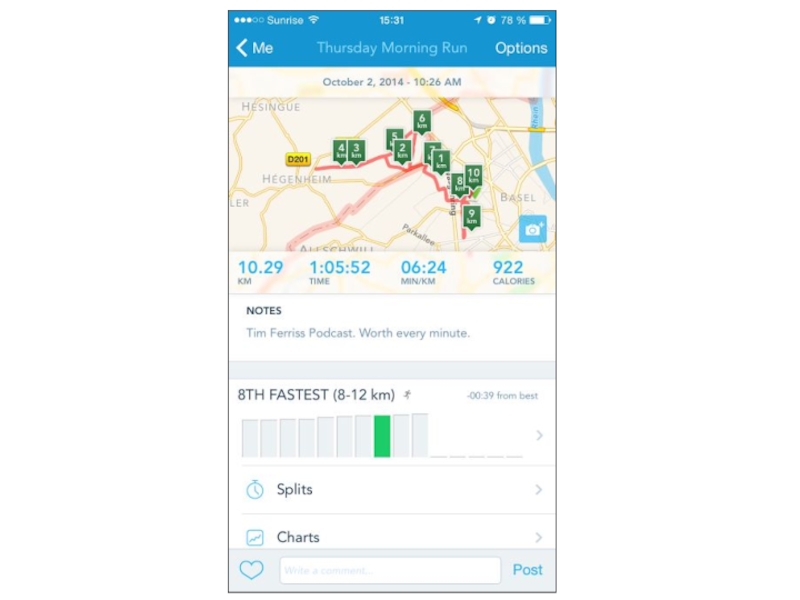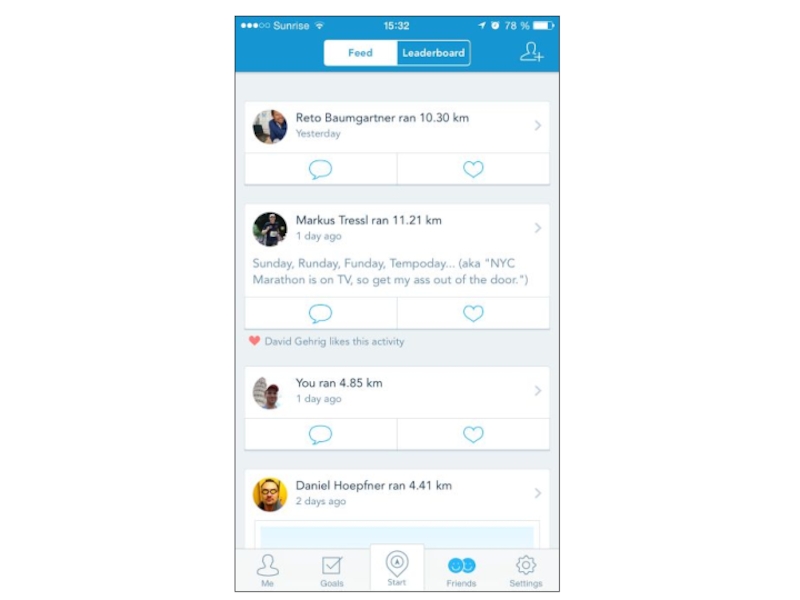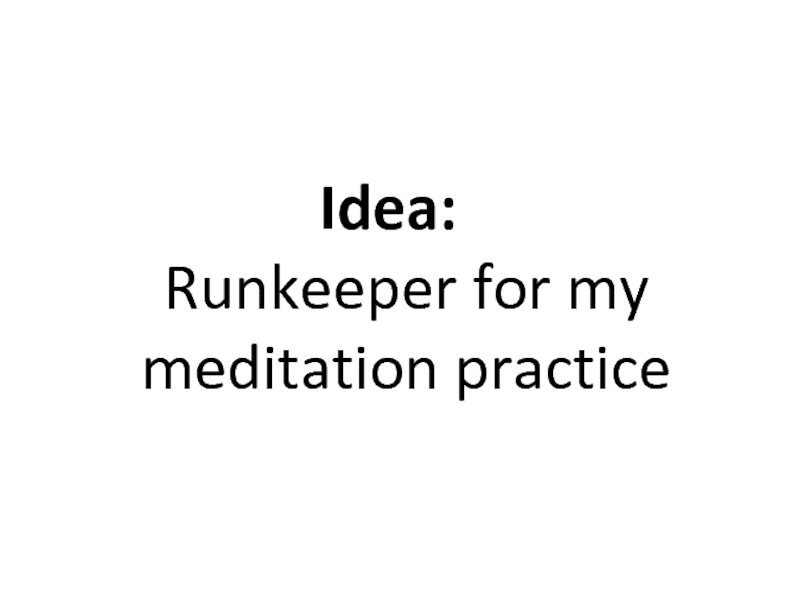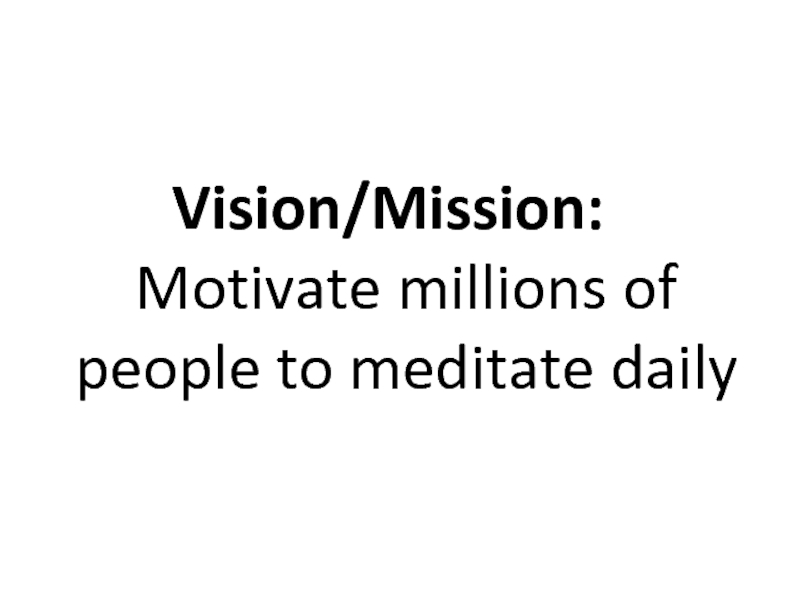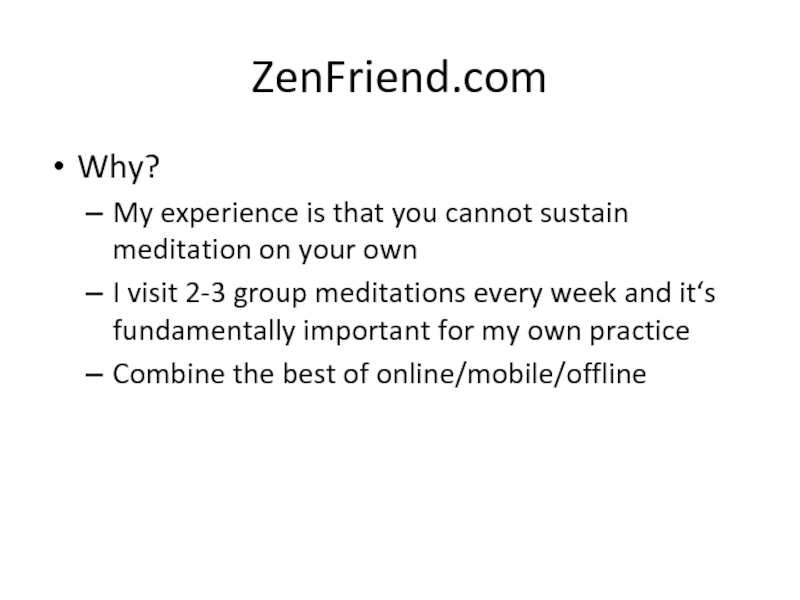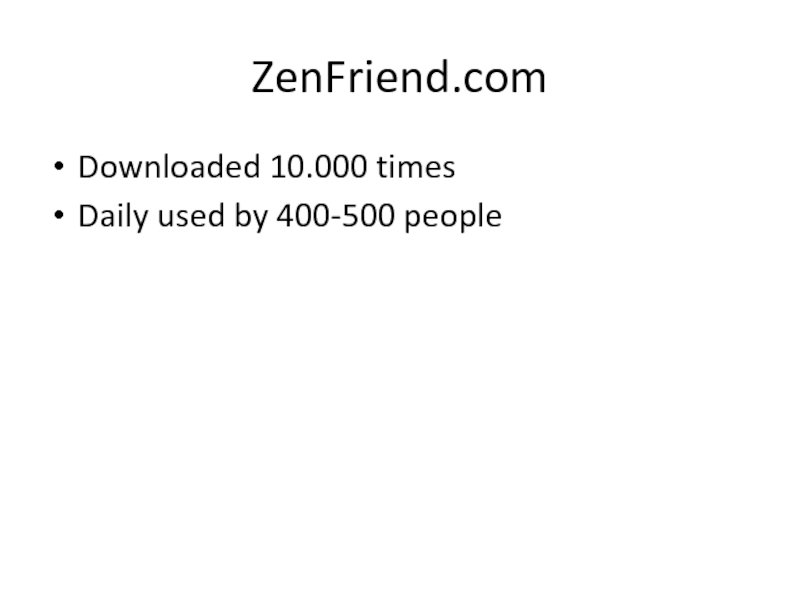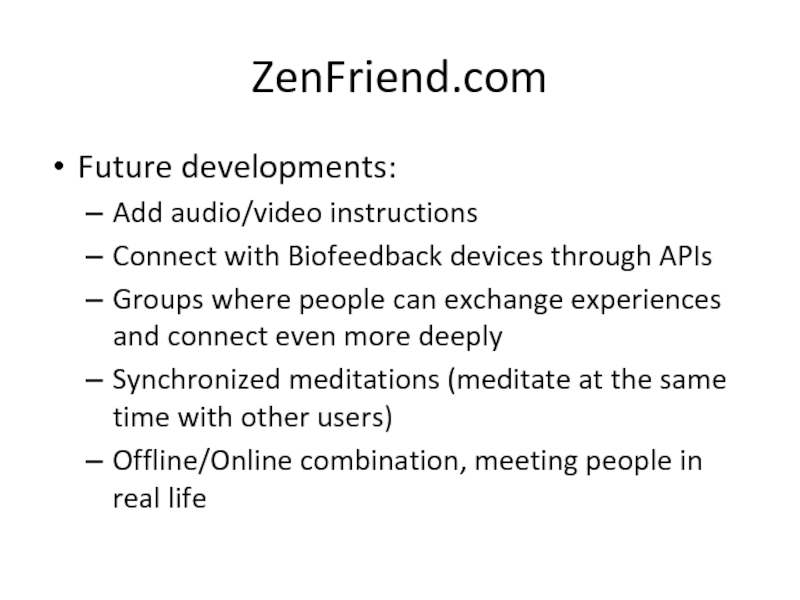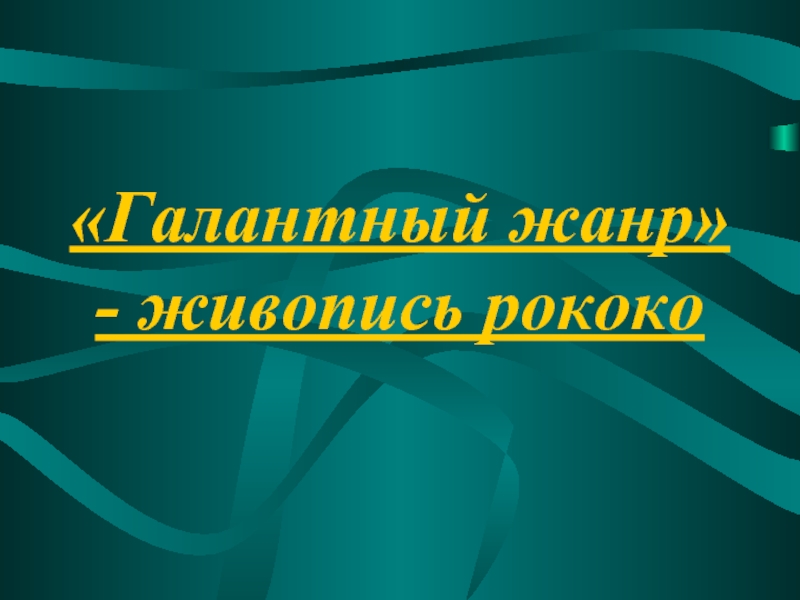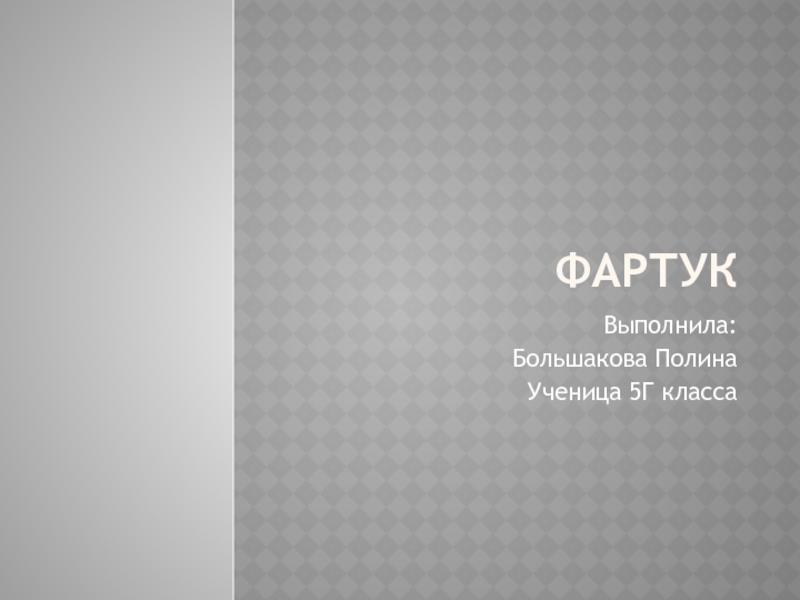- Главная
- Разное
- Дизайн
- Бизнес и предпринимательство
- Аналитика
- Образование
- Развлечения
- Красота и здоровье
- Финансы
- Государство
- Путешествия
- Спорт
- Недвижимость
- Армия
- Графика
- Культурология
- Еда и кулинария
- Лингвистика
- Английский язык
- Астрономия
- Алгебра
- Биология
- География
- Детские презентации
- Информатика
- История
- Литература
- Маркетинг
- Математика
- Медицина
- Менеджмент
- Музыка
- МХК
- Немецкий язык
- ОБЖ
- Обществознание
- Окружающий мир
- Педагогика
- Русский язык
- Технология
- Физика
- Философия
- Химия
- Шаблоны, картинки для презентаций
- Экология
- Экономика
- Юриспруденция
Tapping into Neuroplasticity презентация
Содержание
- 1. Tapping into Neuroplasticity
- 2. Remo Uherek
- 3. Slideshare.net Download slides from: www.slideshare.net/remouherek
- 4. Purpose of this session Overview over the
- 5. What is neuroplasticity? Before: notion that the
- 6. Habits That means that it‘s possible to change habits. Even the deepest ones.
- 7. Habits So how do we change habits effectively?
- 8. „Your beliefs become your thoughts, Your
- 9. Why are habits important? More than 40%
- 10. Definition Habits = anything that we do without conscious thought
- 11. Psychology behind habit formation We are not
- 12. Psychology behind habit formation Habits by themselves are not the problem
- 13. Psychology behind habit formation BAD habits are
- 14. Psychology behind habit formation Complex habits are
- 15. Three-step process
- 16. Three-step process Cue = the trigger, the
- 17. Three-step process Example: Chocolate bar at supermarket
- 18. Three-step process As long as there is
- 19. Three-step process We can use this process
- 20. Changing habits It is very hard to
- 21. Changing habits Willpower alone is not sufficient.
- 22. „Motivation is what gets
- 23. Microhabits and Small wins One large obstacle
- 24. Success Spiral Once a small win has
- 25. How to motivate employees? Help them perform a small win every day
- 26. Peer Support People might be skeptical about
- 27. Reward and Punishment One way to establish
- 28. Example: Excercising Instead of 30 min workouts,
- 29. Example: Pavlok There are many wearable devices.
- 30. Example: Pavlok
- 31. Example: Pavlok Overview: https://www.youtube.com/watch?v=LYvpvz_bzmI Science: https://www.youtube.com/watch?v=FP88Gji98sU
- 32. Example: Pavlok Pavlok combines (social) penalties, accountability
- 33. Example: Pavlok Pavlok combines (social) penalties, accountability
- 34. Example: Pavlok Example: Wake up without hitting
- 36. What is Meditation? To meditate = to
- 37. Brain Activity
- 38. Brain Activity Anterior cingulate cortex Plays a
- 39. Meditation Research Meditation and its effect on
- 40. Mind & Life Institute „The Mind
- 41. EEG Studies
- 42. EEG Studies Studies found that meditation lowers
- 43. EEG Studies Increase in the specific frequencies
- 44. fMRI Studies
- 45. fMRI Studies Increased activity in the anterior
- 46. fMRI Studies Evidence to suggest meditation plays
- 47. fMRI Studies Long-term meditation practitioners have also
- 48. Meditation Research Kaul et al. found that
- 49. Western therapeutic use Meditation has entered the
- 50. Decreased processing Brain stops processing information as
- 51. Decreased processing
- 52. Survey of Beginners People who meditated for
- 53. Cognitive control Meditation requires a strong cognitive
- 54. Biofeedback Can you increase the efficiency of
- 55. Change your Mind http://youtu.be/vbLEf4HR74E?t=13m37s
- 56. Meditation as a Trend Studies suggest that
- 57. Meditation as a Trend Google, Twitter, Apple,
- 58. Meditation as a Trend Economic benefit: decrease
- 59. What is Meditation? Meditation is the process
- 60. What is Meditation? The point of meditation
- 61. What is Meditation? As neuroscientists have verified,
- 62. 2500 years ago 2,500 years ago, a
- 63. 2500 years ago He became known as
- 64. 2500 years ago The Buddha did not
- 65. Negativity Bias Dr. Laura Kiken and Dr.
- 66. The Wandering Mind Did you know that
- 67. Focus Meditation retrains your brain to focus
- 68. The Muse Heart rate monitor for the mind Realtime biofeedback Video: http://store.choosemuse.com/products/muse
- 69. Applied Meditation
- 70. Applied meditation What do we do with
- 71. Applied meditation I believe that these things
- 72. Focusing on the real problems Focusing on
- 74. Focusing on the real problems We are
- 75. How will the world look
- 76. Focusing on the real problems We are
- 77. People like Leila Janah are already doing it!
- 78. Focusing on the REAL problems We are
- 79. ZenFriend Case Study
- 80. Why did I start ZenFriend.com? Meditation very
- 81. How I Simplified my Life: http://remo.fm/2010/03/21/how-i-simplified-my-life/
- 82. My Street Living Experiences Bielefeld 2011: http://remo.fm/2011/07/15/street-living-experiences/
- 83. My Street Living Experiences Basel 2014: http://remo.fm/2014/09/14/street-retreat-2014/
- 84. My Street Living Experiences Basel 2014: http://remo.fm/2014/09/14/street-retreat-2014/
- 85. Why did I start ZenFriend.com? Used Runkeeper successfully for my running
- 89. Idea: Runkeeper for my meditation practice
- 95. Vision/Mission: Motivate millions of people to meditate daily
- 96. ZenFriend.com Why? My experience is that you
- 97. ZenFriend.com Downloaded 10.000 times Daily used by 400-500 people
- 98. ZenFriend.com Future developments: Add audio/video instructions Connect
- 99. Your Help is Appreciated We don‘t have
- 100. Thank you! Blog: remo.fm
Слайд 4Purpose of this session
Overview over the Theory & Practice of Habit
Change
Why do habits stick? Why not?
What is neuroplasticity?
What are results from meditation research?
How can technology help us?
What can we learn from ZenFriend.com?
Why do habits stick? Why not?
What is neuroplasticity?
What are results from meditation research?
How can technology help us?
What can we learn from ZenFriend.com?
Слайд 5What is neuroplasticity?
Before: notion that the connections in the brain develop
until maturity, and then get stuck
After: Neuroscience has proven that this is WRONG. The brain remains flexible and able to change
After: Neuroscience has proven that this is WRONG. The brain remains flexible and able to change
Слайд 8
„Your beliefs become your thoughts,
Your thoughts become your words,
Your words become
your actions,
Your actions become your habits,
Your habits become your values,
Your values become your destiny.“
- Mahatma Gandhi
Your actions become your habits,
Your habits become your values,
Your values become your destiny.“
- Mahatma Gandhi
Слайд 9Why are habits important?
More than 40% of the actions people perform
each day are habits (Duke University, 2006)
If you want to live a richer, more meaningful life, focusing on habits makes a lot of sense
If you want to live a richer, more meaningful life, focusing on habits makes a lot of sense
(Main source for this part: Pavlok.com)
Слайд 11Psychology behind habit formation
We are not born with habits
Habits free up
time and energy
This is why you have great ideas while you are taking a shower, or walking – your actions are automatic so your mind is free to thing about something else
This is why you have great ideas while you are taking a shower, or walking – your actions are automatic so your mind is free to thing about something else
Слайд 13Psychology behind habit formation
BAD habits are the problem
The unproductive and unhealthy
ones are
Слайд 14Psychology behind habit formation
Complex habits are just a combination of several
smaller habits that are being performed in succession.
The completion of one smaller habit triggers another.
The completion of one smaller habit triggers another.
Слайд 16Three-step process
Cue = the trigger, the motivator to do something
Routine =
Action that we perform
Reward = (Positive) result
Reward = (Positive) result
Слайд 17Three-step process
Example: Chocolate bar at supermarket checkout
The first time you did
it, it was a conscious decision.
After the first time, the brain doesn‘t even think about what is happening. The habit is triggered automatically.
Eventually, the cue will trigger a craving for the reward, leading to action
After the first time, the brain doesn‘t even think about what is happening. The habit is triggered automatically.
Eventually, the cue will trigger a craving for the reward, leading to action
Слайд 18Three-step process
As long as there is a consistent cue and a
pleasurable reward, you‘ll form a habit.
This leads to habits that we don‘t really want
This leads to habits that we don‘t really want
Слайд 19Three-step process
We can use this process to our benefit
We can identify
habits that are desirable and use the cue-routine-reward process to ingrain them into our everyday life
We can also use this process to change our habits.
We can also use this process to change our habits.
Слайд 20Changing habits
It is very hard to destroy habits. Instead, they should
be replaced.
The best way to replace habits is to keep the same cue and reward, and replace the routine.
Example: Instead of eating ice cream you have a bowl of frozen berries, fulfilling the desire for a cold treat.
The best way to replace habits is to keep the same cue and reward, and replace the routine.
Example: Instead of eating ice cream you have a bowl of frozen berries, fulfilling the desire for a cold treat.
Слайд 21Changing habits
Willpower alone is not sufficient.
Habits cannot be formed from brute
force alone. You‘ll fail if your method relies on willpower alone.
You need to have a reason. You need to know the WHY, the big-picture goal.
You need to have a reason. You need to know the WHY, the big-picture goal.
Слайд 23Microhabits and Small wins
One large obstacle is lacking the ability to
complete the target action (Stanford psychologist BJ Fogg)
Solution:
Focusing on Microhabits and Small Wins
Instead of wanting to meditate for 20 minutes, you just do a 10 sec meditation every day, doing two mindful breaths
Solution:
Focusing on Microhabits and Small Wins
Instead of wanting to meditate for 20 minutes, you just do a 10 sec meditation every day, doing two mindful breaths
Слайд 24Success Spiral
Once a small win has been accomplished, forces are set
in motion that favor another small win (Prof. Alan Krueger)
? Success spiral
Слайд 26Peer Support
People might be skeptical about their ability to change if
they‘re by themselves, but a group will convince them to suspend disbelief. A community creates belief (Lee Ann Kaskutas)
Example: 12 Step Groups e.g. Alcoholics Anonymous
Example: 12 Step Groups e.g. Alcoholics Anonymous
Слайд 27Reward and Punishment
One way to establish new habits is to have
an accountability partner
You check in with your accountability partner every day
If you don‘t do your habit, you have to take a punishment (e.g. blame or paying money)
If you succeed, you get rewarded by being praised
You check in with your accountability partner every day
If you don‘t do your habit, you have to take a punishment (e.g. blame or paying money)
If you succeed, you get rewarded by being praised
Слайд 28Example: Excercising
Instead of 30 min workouts, just start with a microhabit
7
Min Workout every day, no matter what
Do this for 20-30 days in a row, don‘t miss one day
Do this for 20-30 days in a row, don‘t miss one day
Слайд 29Example: Pavlok
There are many wearable devices.
Most focus on tracking, but
the biggest problem is not tracking
The biggest problem is motivation
Pavlok is one of the first devices that aspires to change that
Science: Pavlovian Conditioning
Dogs get meat powder after bell
Ringing bell enough to get saliva running
The biggest problem is motivation
Pavlok is one of the first devices that aspires to change that
Science: Pavlovian Conditioning
Dogs get meat powder after bell
Ringing bell enough to get saliva running
Слайд 31Example: Pavlok
Overview: https://www.youtube.com/watch?v=LYvpvz_bzmI
Science: https://www.youtube.com/watch?v=FP88Gji98sU
Слайд 32Example: Pavlok
Pavlok combines (social) penalties, accountability and rewards
Stimulation is not only
through positive things (rewards), it‘s also through the fear of loss, or the fear of a negative stimuli
Слайд 33Example: Pavlok
Pavlok combines (social) penalties, accountability and rewards
Stimulation is not only
through positive things (rewards), it‘s also through the fear of loss, or the fear of a negative stimuli
Слайд 34Example: Pavlok
Example: Wake up without hitting the „snooze“ button
Every time who
hit the „snooze“ button, you get an electric shock
Слайд 36What is Meditation?
To meditate = to cultivate
Cultivate what? Cultivate the mind,
cultivate certain human qualities
Слайд 38Brain Activity
Anterior cingulate cortex
Plays a role in:
Regulating blood pressure and heart
rate
Rational cognitive functions, such as reward anticipation, decision-making, empathy, impulse control, and emotion
Rational cognitive functions, such as reward anticipation, decision-making, empathy, impulse control, and emotion
Слайд 39Meditation Research
Meditation and its effect on brain activity and the central
nervous system became a focus of collaborative research in neuroscience, psychology and neurobiology during the latter 20th century
Since 1987: Mind and Life Conferences Co-Founded by Dalai Lama, dedicated to exploring the relationship of science and Meditation/Buddhism
Since 1987: Mind and Life Conferences Co-Founded by Dalai Lama, dedicated to exploring the relationship of science and Meditation/Buddhism
Слайд 40Mind & Life Institute
„The Mind & Life Institute is a non-profit
organization committed to building a scientific understanding of the mind as a way to help reduce suffering and promote human flourishing. To accomplish this, we foster interdisciplinary dialogue between Western science, philosophy, humanities, and contemplative traditions, supporting the integration of first-person inquiry through meditation and other contemplative practices into traditional scientific methodology. “
- www.mindandlife.org
- www.mindandlife.org
Слайд 42EEG Studies
Studies found that meditation lowers theta waves (4–8 Hz) and
alpha waves (8–12 Hz) (Cahn and Polich, 2006)
Findings suggest that in a meditative state a person is more relaxed but maintains a sharp awareness.
Findings suggest that in a meditative state a person is more relaxed but maintains a sharp awareness.
Слайд 43EEG Studies
Increase in the specific frequencies expressed in the alpha range,
increased alpha band power, and an overall slowing (reduction in frequency) in EEG activity in experienced meditators versus less experienced meditators while meditating (Kasamatsu and Hirai, 1966)
Слайд 45fMRI Studies
Increased activity in the anterior cingulate cortex, frontal cortex, prefrontal
cortex and cingulate cortex (Holzel et al, 2007)
Indicates greater sensitivity to emotional expression and positive emotion due to the neural circuitry activated (Davidson et al, 2008)
Indicates greater sensitivity to emotional expression and positive emotion due to the neural circuitry activated (Davidson et al, 2008)
Слайд 46fMRI Studies
Evidence to suggest meditation plays a protective role against the
natural reduction in grey matter volume associated with aging
Which plays a role in learning, cognitive flexibility and attentional processing. This could suggest a better attentiveness in aging meditators versus non-meditators (Pagnoni et al, 2007)
Which plays a role in learning, cognitive flexibility and attentional processing. This could suggest a better attentiveness in aging meditators versus non-meditators (Pagnoni et al, 2007)
Слайд 47fMRI Studies
Long-term meditation practitioners have also shown to have a higher
tolerance for pain (Grant et al, 2009)
Meditation increases self-regulation and attentiveness (Fox et al, 2014)
Meditation increases self-regulation and attentiveness (Fox et al, 2014)
Слайд 48Meditation Research
Kaul et al. found that sleep duration in long-term experienced
meditators was lower than in non-meditators and general population norms
Meditation induces a host of biochemical and physical changes in the body collectively referred to as the "relaxation response“, including changes in metabolism, heart rate, respiration, blood pressure and brain chemistry (Benson, 1997)
Meditation induces a host of biochemical and physical changes in the body collectively referred to as the "relaxation response“, including changes in metabolism, heart rate, respiration, blood pressure and brain chemistry (Benson, 1997)
Слайд 49Western therapeutic use
Meditation has entered the mainstream of health care as
a method of stress and pain reduction.
Example: Mindfulness-Based Stress Reduction (MBSR) by Jon Kabat-Zinn
Example: Mindfulness-Based Stress Reduction (MBSR) by Jon Kabat-Zinn
Слайд 50Decreased processing
Brain stops processing information as actively as it normally would,
shown by decreased beta waves
Слайд 52Survey of Beginners
People who meditated for at least one month reported:
75%
said meditation improved their focus at work
90% learned skills that they could apply to other areas
73% experienced spiritual or emotional changes
(via https://www.lift.do/meditation)
90% learned skills that they could apply to other areas
73% experienced spiritual or emotional changes
(via https://www.lift.do/meditation)
Слайд 53Cognitive control
Meditation requires a strong cognitive control
This is why it cannot
be practices by children and teenagers, because they haven‘t fully developed their cognitive abilities
For children and teenagers, the most important factor is role-modeling, by parents, teachers and other people.
For children and teenagers, the most important factor is role-modeling, by parents, teachers and other people.
Слайд 54Biofeedback
Can you increase the efficiency of meditation by applying biofeedback?
Experiment:
Electrodes were
implanted in the brain of rats
Pleasurable sensations could be stimulated by pressing a button
The pleasure was so intense, that rats stopped doing other activities, including sex and eating
Rats died from exhaustion
Conclusion: Applying biofeedback can be dangerous
Pleasurable sensations could be stimulated by pressing a button
The pleasure was so intense, that rats stopped doing other activities, including sex and eating
Rats died from exhaustion
Conclusion: Applying biofeedback can be dangerous
Слайд 56Meditation as a Trend
Studies suggest that one million more Americans take
up meditation every year - mostly in healthcare contexts (...) because they're suffering from chronic pain or post-traumatic stress.
http://www.huffingtonpost.com/jay-michaelson/sn-goenka-dead_b_4016374.html
Слайд 57Meditation as a Trend
Google, Twitter, Apple, or dozens of other technology
companies using mindfulness to improve the performance and well-being of employees
http://www.huffingtonpost.com/jay-michaelson/sn-goenka-dead_b_4016374.html
Слайд 58Meditation as a Trend
Economic benefit: decrease healthcare costs, improve productivity, and
speed processes of healing
http://www.huffingtonpost.com/jay-michaelson/sn-goenka-dead_b_4016374.html
Слайд 59What is Meditation?
Meditation is the process of focusing and watching the
mind. That's it. It doesn't matter how you sit, if you sit, or even how long you do it, as long as you give the mind time to slow down. You can meditate while eating, running, even going to the bathroom. Why? Because it's in the intention, not the action -- it's the how, not the what.
Source: http://www.huffingtonpost.com/jay-michaelson/meditation-on-the-run_b_578104.html
Слайд 60What is Meditation?
The point of meditation is not to sit in
the shape of a pretzel or chant in Sanskrit. These are the means, not the end. The point is: focus and watch the mind. Mostly, this is accomplished by not-doing: not thinking, not getting things done, not rushing, not trying to accomplish a goal. Just sit for a moment, right now, without seeking or desiring anything at all.
http://www.huffingtonpost.com/jay-michaelson/meditation-on-the-run_b_578104.html
Слайд 61What is Meditation?
As neuroscientists have verified, these practices are just like
lifting weights: they cause part of the mind to strengthen, and grow. More time spent with meditation, more synaptic connections in the pre-frontal cortex.
http://www.huffingtonpost.com/jay-michaelson/meditation-on-the-run_b_578104.html
Слайд 622500 years ago
2,500 years ago, a renegade Indian prince proposed that
it is possible to unlearn the basic human tendencies toward wanting the pleasant, hating the unpleasant, and ignoring the neutral, and in so doing to suffer less, grow wiser, and act more compassionately.
Слайд 632500 years ago
He became known as the Buddha
Quickly, this teaching, became
what its founder claimed it wasn't: an ideology, even a religion. Subsequent teachers said the path is too difficult, so we must pray to semi-divine beings and hope that they will help us. Or it's only for some people and not for the rest of us. And so on.
Слайд 642500 years ago
The Buddha did not understand the brain scientifically, but
he did understand the mind experientially. It is possible, he found, to upgrade your mind through the practice of meditation, just as today you might upgrade your biceps by doing curls at the gym.
Source: http://www.huffingtonpost.com/jay-michaelson/meditation_b_3741544.html
Слайд 65Negativity Bias
Dr. Laura Kiken and Dr. Natalie Shook investigated whether meditation
could reduce negativity bias. They learned that just one 15-minute meditation session was all it took to reduce someone’s susceptibility to negativity bias and help them think more positively.
http://blog.lift.do/meditation-reduces-negativity-bias-interview-dr-laura-kiken-dr-nat/
http://spp.sagepub.com/content/early/2011/01/08/1948550610396585.abstract
Слайд 66The Wandering Mind
Did you know that your mind wanders about 50%
of the time?
(Source: Harvard University)
Слайд 67Focus
Meditation retrains your brain to focus on one task at a
time. One study at Stanford University found that people with just 8 weeks of mindfulness meditation practice stuck to tasks longer and switched tasks less frequently than people with no meditation experience. (...) In Lift’s own research, 75% of people who meditated reported an increase in focus at work within 1 month of their practice.
http://meditationbook.lift.do/2014/07/productivity/
Слайд 68The Muse
Heart rate monitor for the mind
Realtime biofeedback
Video: http://store.choosemuse.com/products/muse
Слайд 70Applied meditation
What do we do with this awareness?
How do we spend
our limited time as a human?
Слайд 71Applied meditation
I believe that these things can help us focus on
what is really important, to make the world a better place
Слайд 72Focusing on the real problems
Focusing on the 99%
Global warming is real
Depression,
addictions, suicides are real
Feeding 10 billion people is real
Feeding 10 billion people is real
Слайд 74Focusing on the real problems
We are a family of 7 billion
people (soon 10b)
We need awareness about ecology, ending violence, mental wellbeing
We need to focus more on basic human values and what the Dalai Lama calls „moral ethics“
A lot of progress has been made in 20th century (civil rights, human rights). This trend needs to continue!
We need awareness about ecology, ending violence, mental wellbeing
We need to focus more on basic human values and what the Dalai Lama calls „moral ethics“
A lot of progress has been made in 20th century (civil rights, human rights). This trend needs to continue!
Слайд 76Focusing on the real problems
We are a family of 7 billion
people (soon 10b)
Why not focusing on things that will improve humanity in 100 years?
We need more people who think long-term and globally
Why not focusing on things that will improve humanity in 100 years?
We need more people who think long-term and globally
Слайд 78Focusing on the REAL problems
We are a family of 7 billion
people (soon 10b)
Why not focusing on things that will improve humanity in 100 years?
We need more people who think long-term and globally
Why not focusing on things that will improve humanity in 100 years?
We need more people who think long-term and globally
Слайд 80Why did I start ZenFriend.com?
Meditation very important part of my life
Helps
me get aware of the truly important things
Helps me to live a more meaningful life
Helps me find a healthy balance in life
Helps me to live a more meaningful life
Helps me find a healthy balance in life
Слайд 82
My Street Living Experiences Bielefeld 2011:
http://remo.fm/2011/07/15/street-living-experiences/
Слайд 96ZenFriend.com
Why?
My experience is that you cannot sustain meditation on your own
I
visit 2-3 group meditations every week and it‘s fundamentally important for my own practice
Combine the best of online/mobile/offline
Combine the best of online/mobile/offline
Слайд 98ZenFriend.com
Future developments:
Add audio/video instructions
Connect with Biofeedback devices through APIs
Groups where people
can exchange experiences and connect even more deeply
Synchronized meditations (meditate at the same time with other users)
Offline/Online combination, meeting people in real life
Synchronized meditations (meditate at the same time with other users)
Offline/Online combination, meeting people in real life
Слайд 99Your Help is Appreciated
We don‘t have a marketing budget. Please tell
one friend or relative about it or share this presentation via slideshare.net/remouherek! :)
Basic Version is FREE :)
7 Day Trial of Premium version is FREE
iPhone only (Android coming soon)
Basic Version is FREE :)
7 Day Trial of Premium version is FREE
iPhone only (Android coming soon)
Слайд 100
Thank you!
Blog: remo.fm
Twitter: @remouherek
Email: remo.uherek@gmail.com
Slides: slideshare.net/remouherek
http://zenfriend.com
